Cheapest Cars In India 2023-24 – Price, Specifications, Mileage, Colors, Images
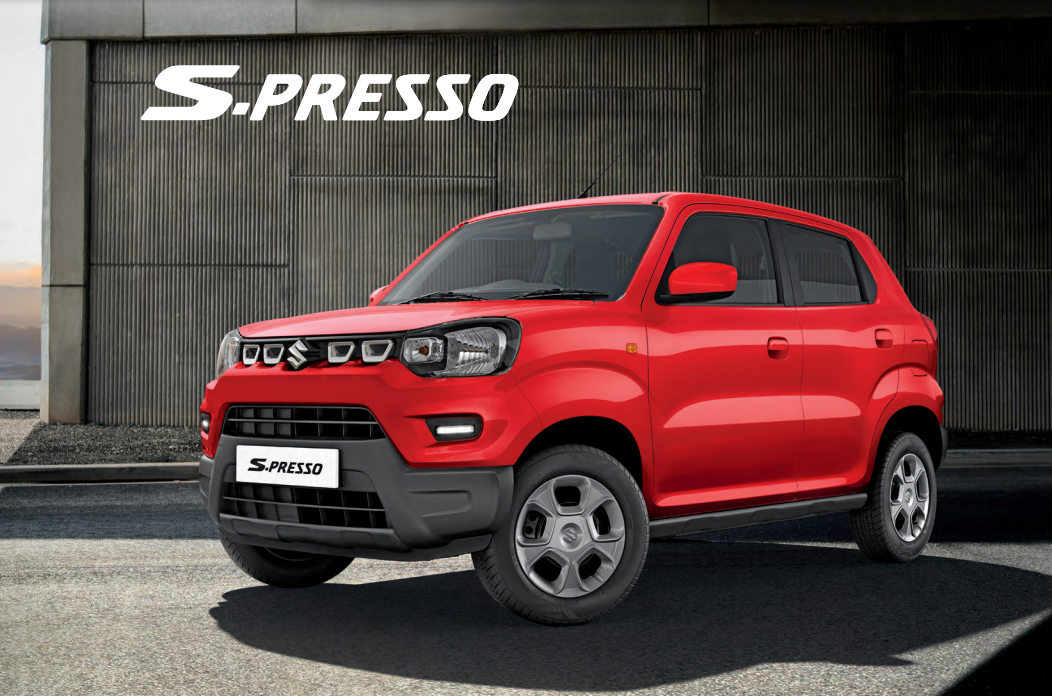

India is one of the fastest-growing markets in the world. According to recent studies, more and more of the nation’s population takes a step up in terms of their overall financial standing. With better income, the number of people that are migrating towards owning their own four-wheeler goes up as well. Whether it be in the form of an affordable new car or a far cheaper used car, there seems to be no shortage of demand in the market.
Automakers have been doing their homework on the matter, and have come to realize that the opportunity is too good to be ignored. In fact, cheap new cars will always find buyers no matter the second-hand car scene. Therefore, we have come up with a list of the cheapest cars in India that you can buy right now. And just so you know, there’s now a discernable difference between what used to be considered cheap yesterday vs what’s actually cheap today. Keep that in mind as you go through the article.
Glance at the table below to get a quick understanding of the prices of the cars that we will be talking about:
| Model | Ex-Showroom Price |
| Maruti Suzuki Alto 800 | Rs. 3,39,000 – Rs. 5,03,000 |
| Datsun redi-Go | Rs. 3,98,000 – Rs. 4,96,000 |
| Maruti Suzuki Alto K10 | Rs. 3,99,000 – Rs. 5,83,500 |
| Maruti Suzuki S-Presso | Rs. 4,25,000 – Rs. 5,99,000 |
| Datsun Go+ | Rs. 4,26,000 – Rs. 6,99,000 |
| Renault Kwid | Rs. 4,64,000 – Rs. 5,99,000 |
| Maruti Suzuki Celerio | Rs. 5,25,000 – Rs. 7,00,000 |
| Tata Tiago | Rs. 5,40,000 – Rs. 7,82,000 |
| Maruti Suzuki Wagon R | Rs. 5,47,500 – Rs. 7,08,000 |
| Mahindra KUV100 NXT | Rs. 6,02,000 – Rs. 7,68,000 |
*Note: All prices mentioned here are ex-showroom, Mumbai.
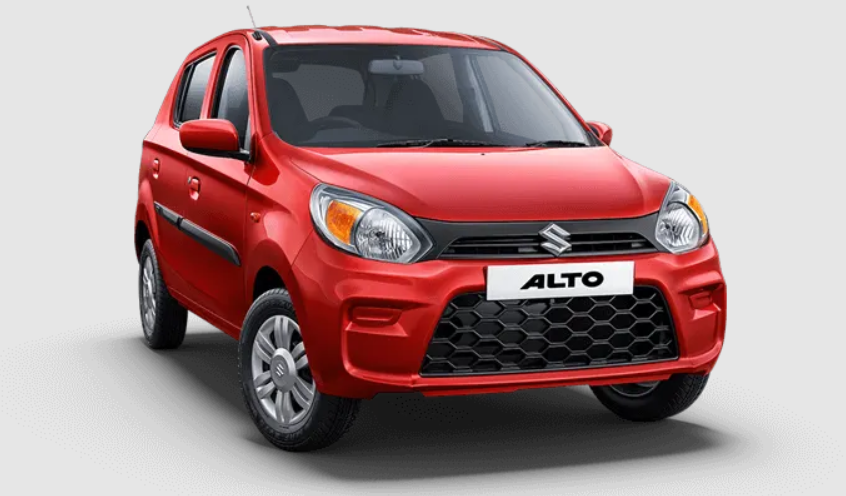
In the early-2000s, the Indian car market was really booming. Seizing this chance was India’s largest automaker, Maruti Suzuki. While the erstwhile 800 had done them well, it was now time to release its spiritual successor. Called the Alto, this simple city car followed many of the steps laid down by its predecessor – it was cheap, easy to drive, required barely any maintenance, and was fun to drive too. Over twenty years on, the new Alto 800 still sticks to this winning formula and is unequivocally the best-selling car in India.
| Maruti Suzuki Alto 800 Petrol Variants | Maruti Suzuki Alto 800 CNG Variants |
| STD (O) Manual | LXI (O) Manual |
| LXI (O) Manual | |
| VXI Manual | |
| VXI+ Manual |
The new Maruti Suzuki Alto 800 is available in six different exterior colors that include Uptown Red, Silky Silver, Granite Grey, Mojito Green, Cerulean Blue, and Solid White.
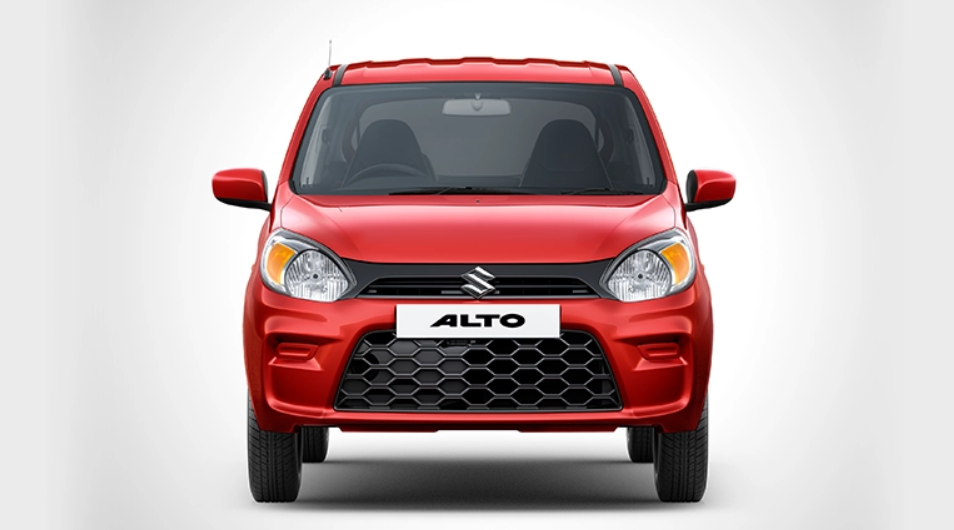
There’s no denying the fact that the Maruti Suzuki Alto 800 won’t be turning heads wherever you go – it simply wasn’t designed for that. However, when compared with its very first avatar, the difference in styling here is apparent enough to set the two apart. The front of the new Alto 800 looks ever-so-slightly more jovial yet substantial, courtesy of the new & larger ‘eye-like’ headlamps, sportier-looking bumper with larger intakes, and a wider & sleeker main grille.
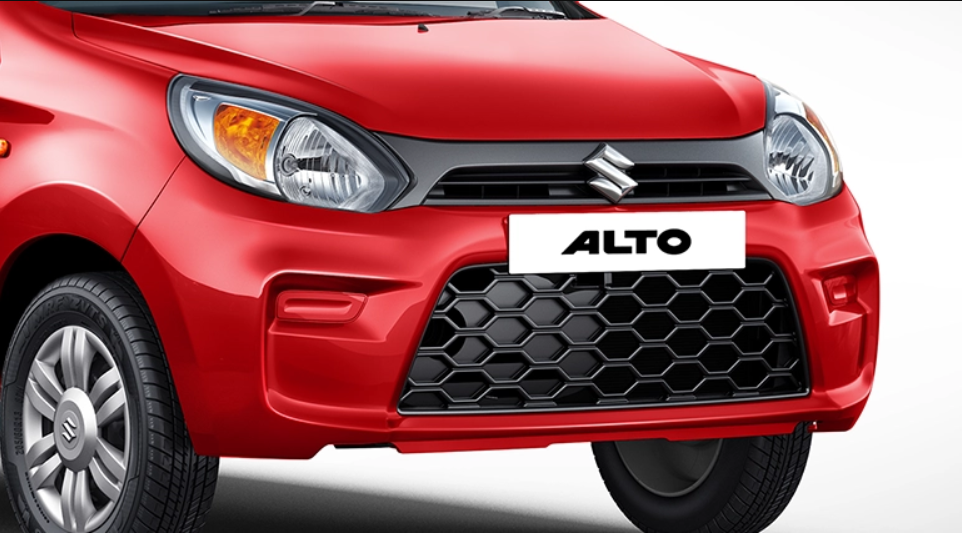
The rest of the car follows the simplistic theme as well. For instance, the side profile looks pretty basic. You get small and narrow 12-inch steel wheels with wheel covers, traditional flip-up door handles, and a pretty mundane-looking roofline. However, Maruti has incorporated decently-stylized door mirrors, extended wheel arches, plus a strong character line that stretches from above the front fender to the rear lighting units.
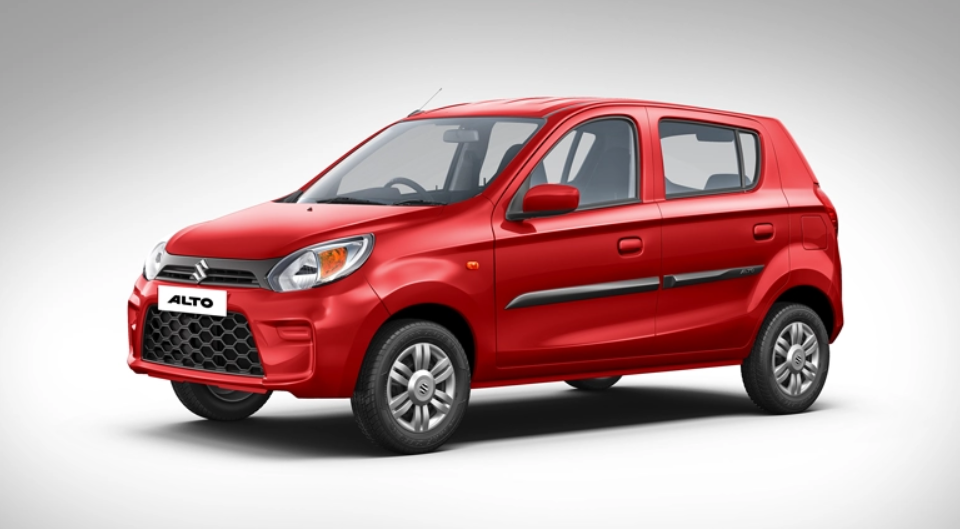
The back of the Alto 800 is just as easy-going as the rest of the design, with not much happening here either. The tail lamps do their job as intended, and that’s about it. There’s no spoiler to speak of, whilst the rear bumper has room to accommodate for the obligatory license plate. As you can sense by now, the overarching theme with the Alto 800 is to retain its simple yet practical nature without having to add any extra flavor.

Keeping up with your exterior expectations, the interior of the Maruti Suzuki Alto 800 remains a simplistic yet reasonably-practical experience. There are no attempts to make this cabin feel plush or ultra-modern whatsoever, and it won’t take long before you realize that. Even the plastics used feel assuredly low-rent if sturdy for the long haul.
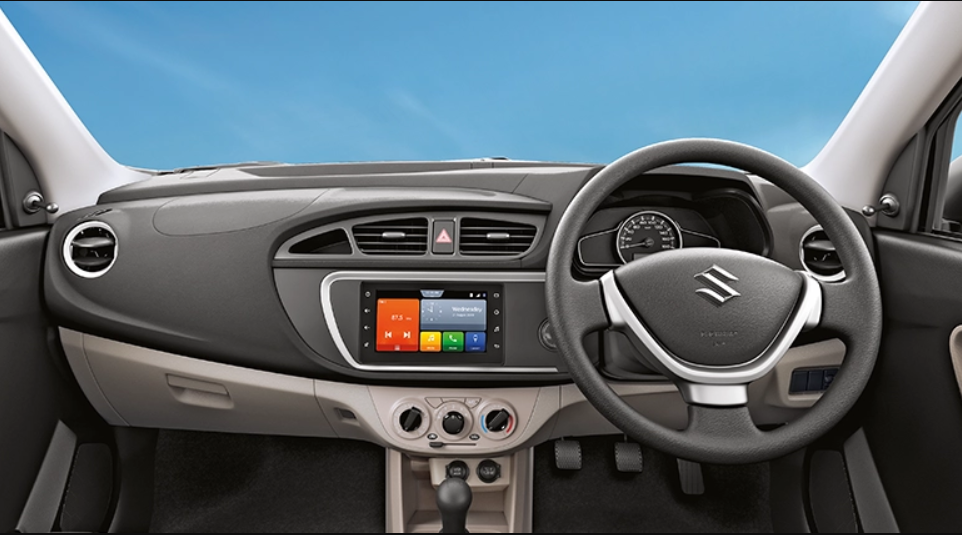
Having said that, the dual-tone finish coupled with Maruti Suzuki’s Smartplay touchscreen adds some sense of modernity. There are some shiny bits of trim around the front AC vents and central console, while the centralized speedometer is flanked by space dedicated to displaying various cautions/warnings. In terms of practicality, you get front & rear cup/bottle holders, smaller pockets in all the doors, and a parcel shelf at the back.
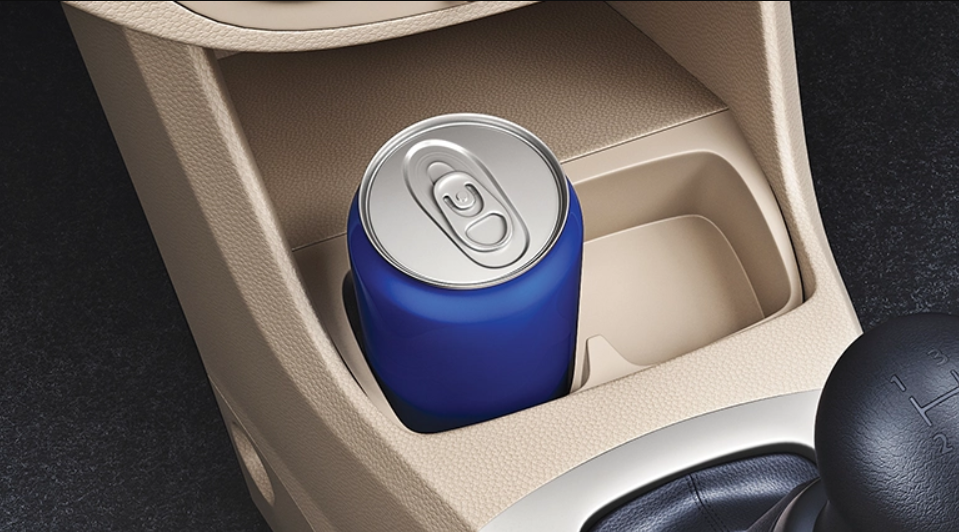
The fabric seats get fixed headrests front & back, with the front ones feeling moderately comfortable for most in-city jaunts. The rear legroom is obviously tight, though carrying four adults in the Alto 800 won’t be too taxing at all. The boot space of the Alto 800 is 177 liters – even more minuscule if you go for the CNG version.
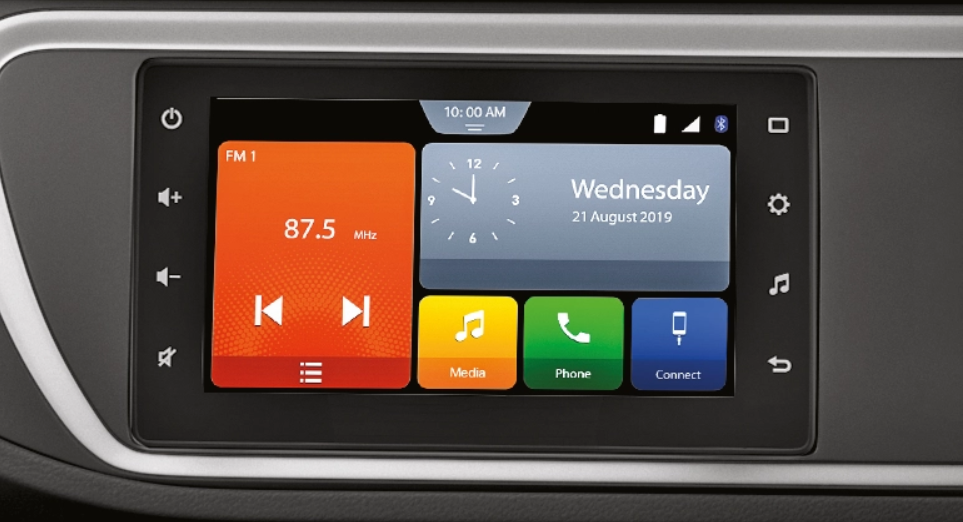
The Maruti Suzuki Alto 800’s equipment list is more functional than glamorous. Even though we can forgive much of that down to its low price, the Alto 800’s evident lack of new-age features may bother many customers that might want those things in a car sold in the modern era.
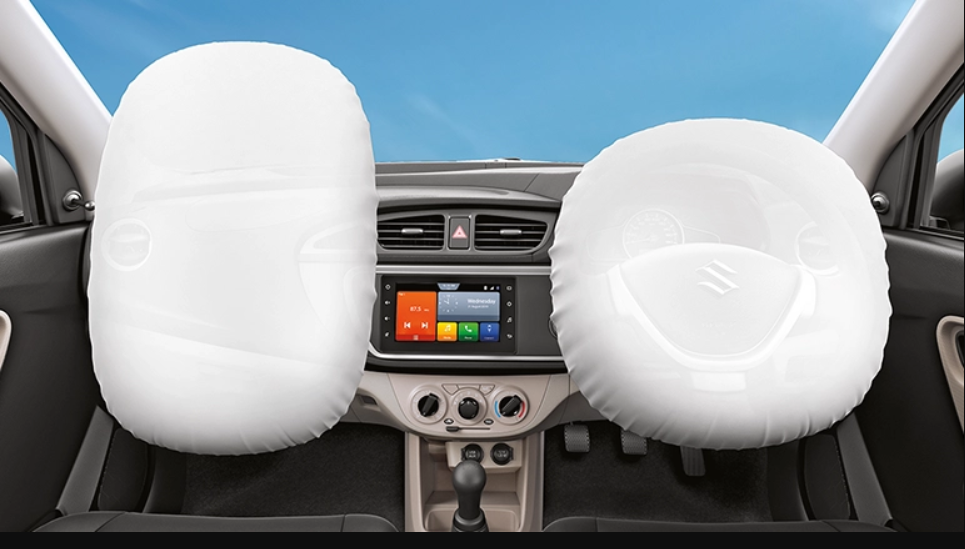
In keeping with the minimum regulatory standards of the land, the Maruti Suzuki Alto 800 gets a few much-needed safety features. The ones that you will likely pay heed to include ABS with EBD, dual front airbags, rear parking sensors, seatbelt reminder, Speed Alert System, child door lock, central locking, and a collapsible steering column.
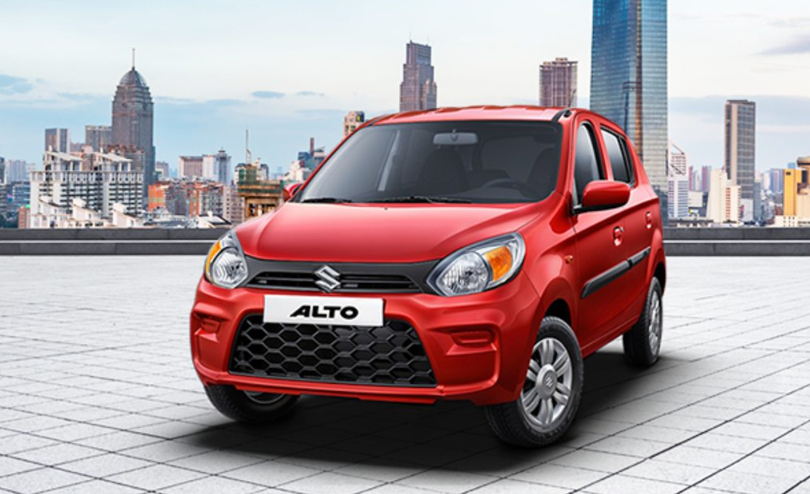
Powering the new Maruti Suzuki Alto 800 is a 796cc three-cylinder engine that can be fueled with either petrol or CNG. It makes 47 horsepower and 69Nm of peak torque when on petrol, whilst the output drops to 40 horsepower with 60Nm of torque when on CNG. The Alto 800 is only offered with a 5-speed manual gearbox that drives the front wheels.
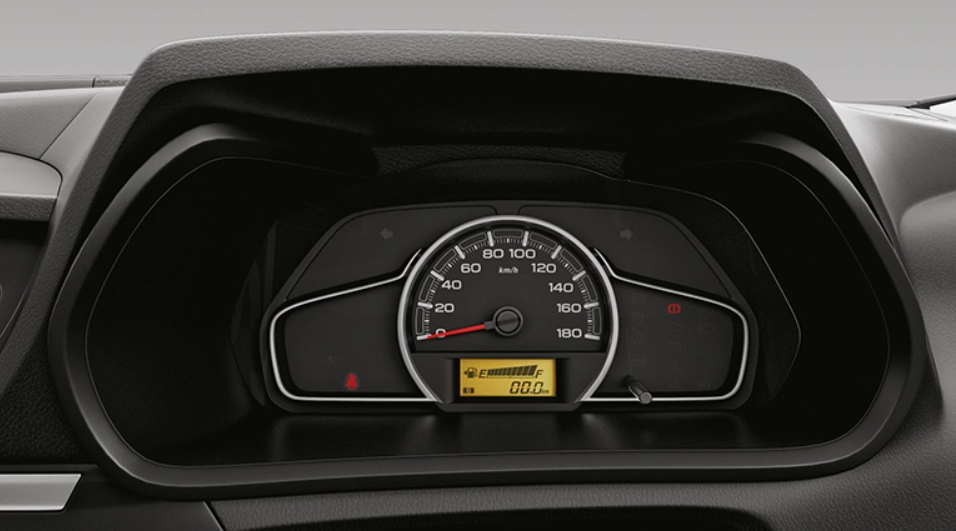
Given enough time and tarmac, the Alto 800 petrol will hit 100 kph in less than 20 seconds and reach a top speed of 140 kph. The Alto 800’s fuel economy while on petrol has been rated at 22.05 kpl, while the CNG version can do 31.59 km/kg.
Even though the entry-level Alto 800 costs very little, step up to the VXI variant. This costs nearly a lakh more, but it won’t make you feel like you have been handed the keys to something from the age of the Flintstones.
| Model | Maruti Suzuki Alto 800 | Maruti Suzuki Alto 800 CNG |
| Engine | 796cc Naturally-Aspirated Three-Cylinder Petrol | 796cc Naturally-Aspirated Three-Cylinder Petrol-CNG |
| Horsepower | 47hp | 40hp |
| Torque | 69Nm | 60Nm |
| Transmission | 5-speed Manual | 5-speed Manual |
| Drive Configuration | FWD | FWD |
| 0-100 Km/H | 17 Seconds | 19 Seconds |
| Top Speed | 140 Km/H | ~ 135 Km/H |
| Mileage | 22.05 Km/L | 31.59 Km/Kg |
| Fuel Tank | 35 Liters | 60 Liters (equivalent) |
| Curb Weight | 730-762 Kg | 845-850 Kg |
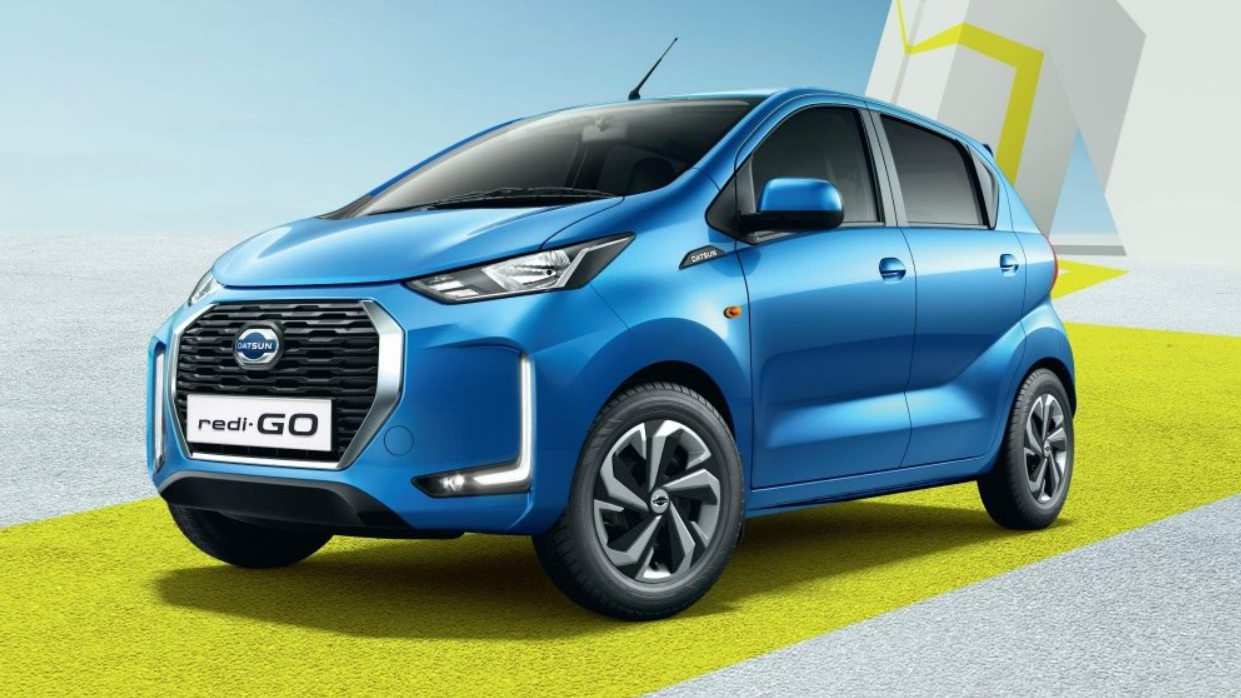
Just like the Alto 800, the Datsun redi-Go is primarily a no-frills city car. Underneath its funky body lies the same platform that can be found in the Kwid. Of course, as we know, the Datsun hatchback is cheaper to buy than its French cousin. Arriving in the Indian market back in 2016, the redi-Go became popular for its design and easily-accessible price tag. Datsun says that its cheapest car is aimed at young buyers that need a city car that doesn’t compromise on styling.
| Datsun redi-Go Petrol Variants |
| D Manual |
| A Manual |
| T Manual |
| T (O) Manual |
| T (O) 1.0L Manual |
| T (O) 1.0L AMT |
In terms of its exterior color options, buyers of the Datsun redi-Go are presented with shades such as Vivid Blue, Ruby Red, Sandstone Brown, Bonze Grey, Crystal Silver, and Opal White.
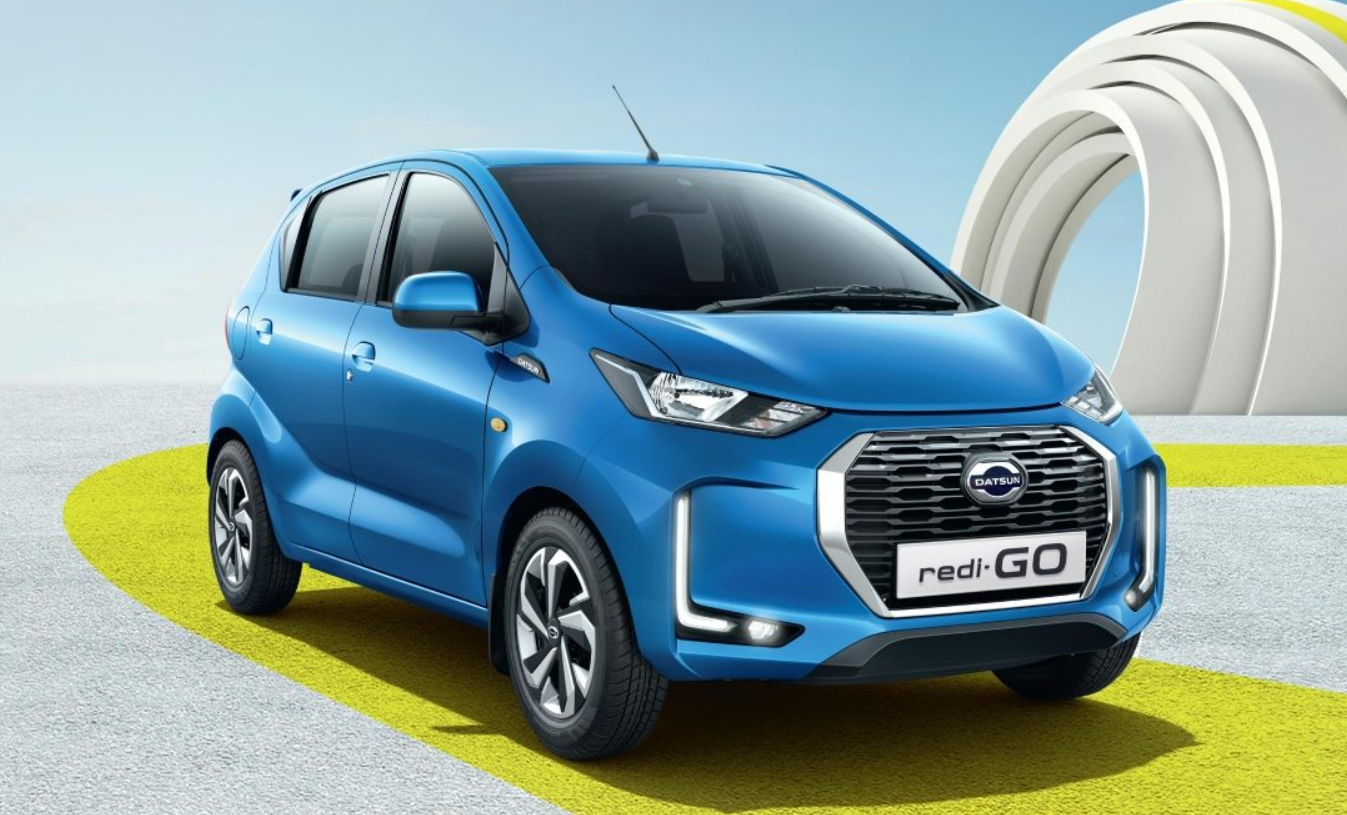
The exterior styling of the redi-Go is one of the biggest reasons why one would buy this car over one of its closest competitors. The front fascia of the redi-Go is its most flamboyant styling feature as it manages to amalgamate a heavily-sloped bonnet with visibly-dominant bulges, sleek swept-back headlights, a massive central grille with chrome surrounds, and a sculpted bumper with long L-shaped daytime-running lights & LED fog lamps.
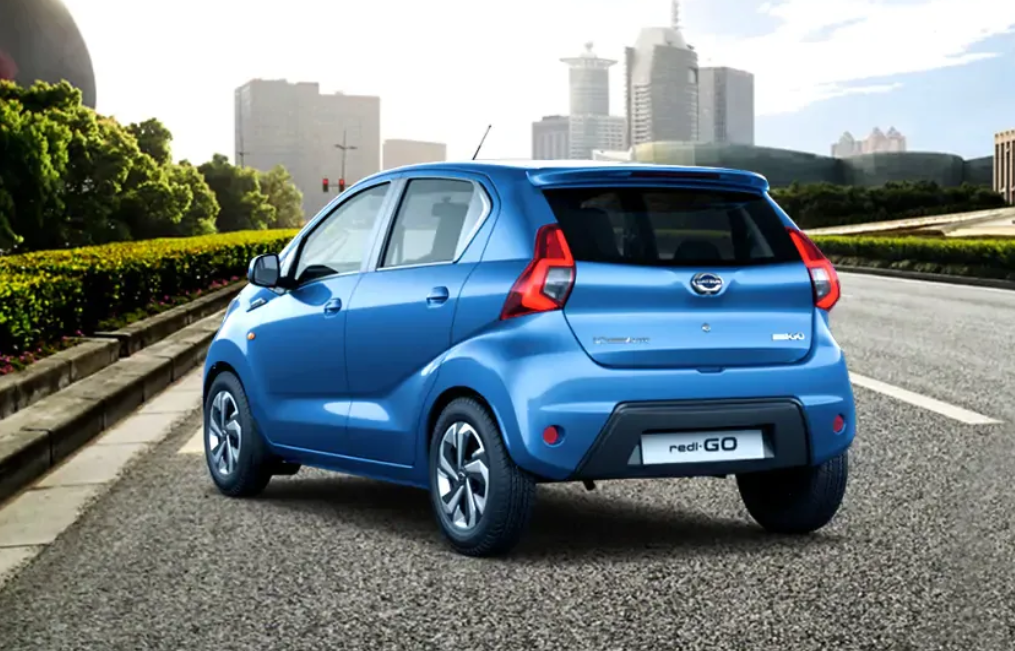
The steeply-sloped A-pillar & windscreen lead to a tall-boy side profile that hosts large windows, curvaceous body panels, ‘Datsun’ fender badges, and a rising beltline. Meanwhile, the 14-inch wheels are far from small for a budget hatchback, and their “Pentablade” design does look quite nice. The tail lamps get a touch of LEDs to make them feel more modern, while the sporty rear bumper and spoiler add to the overall design of this city car.
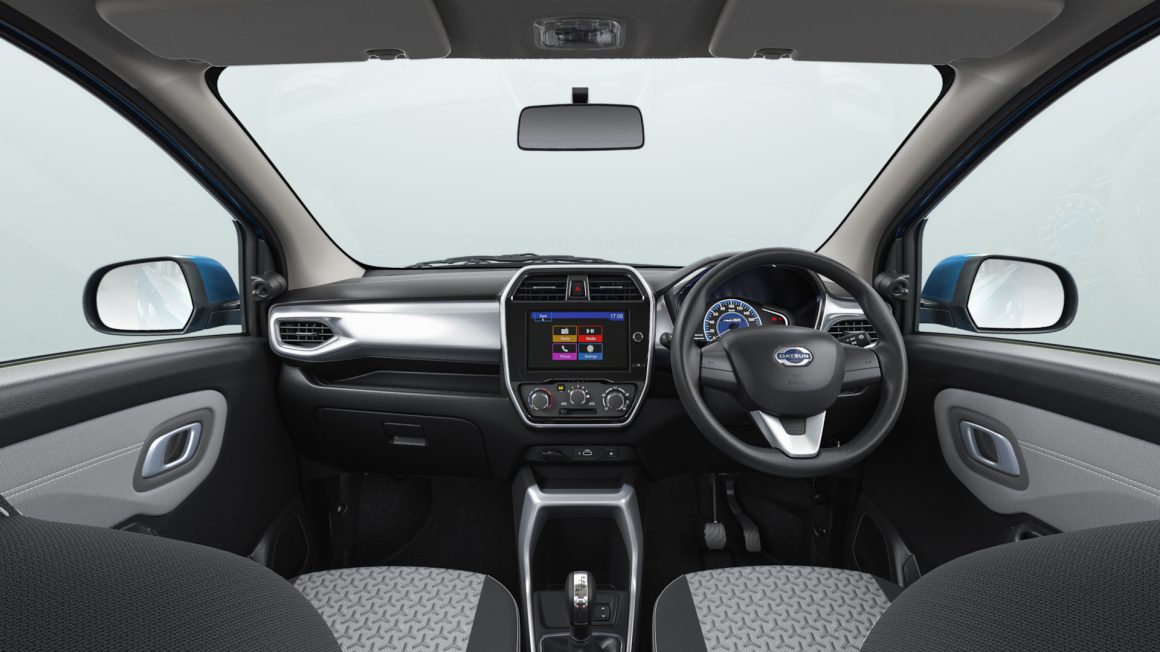
Unlike the Alto 800, the interior of the Datsun redi-Go looks a touch more appealing and youthful. The silver metallic and ivory fabric inserts gel with the black trim quite well, with seat fabric sporting some angular motif for that extra feel of attention-to-detail. However, all that falls apart the moment you start touching & feeling these supposed fancy bits. The quality really is bargain-basement.

On a positive note, the cabin of the redi-Go looks more youthful than that of the Alto 800. Datsun has made sure that there are several small to medium-sized cubbies in this cabin, but the unusably-thick A-pillars restrict some visibility. Then again, the general view from the cabin of the redi-Go is actually quite good, and the relatively high seating position helps too.
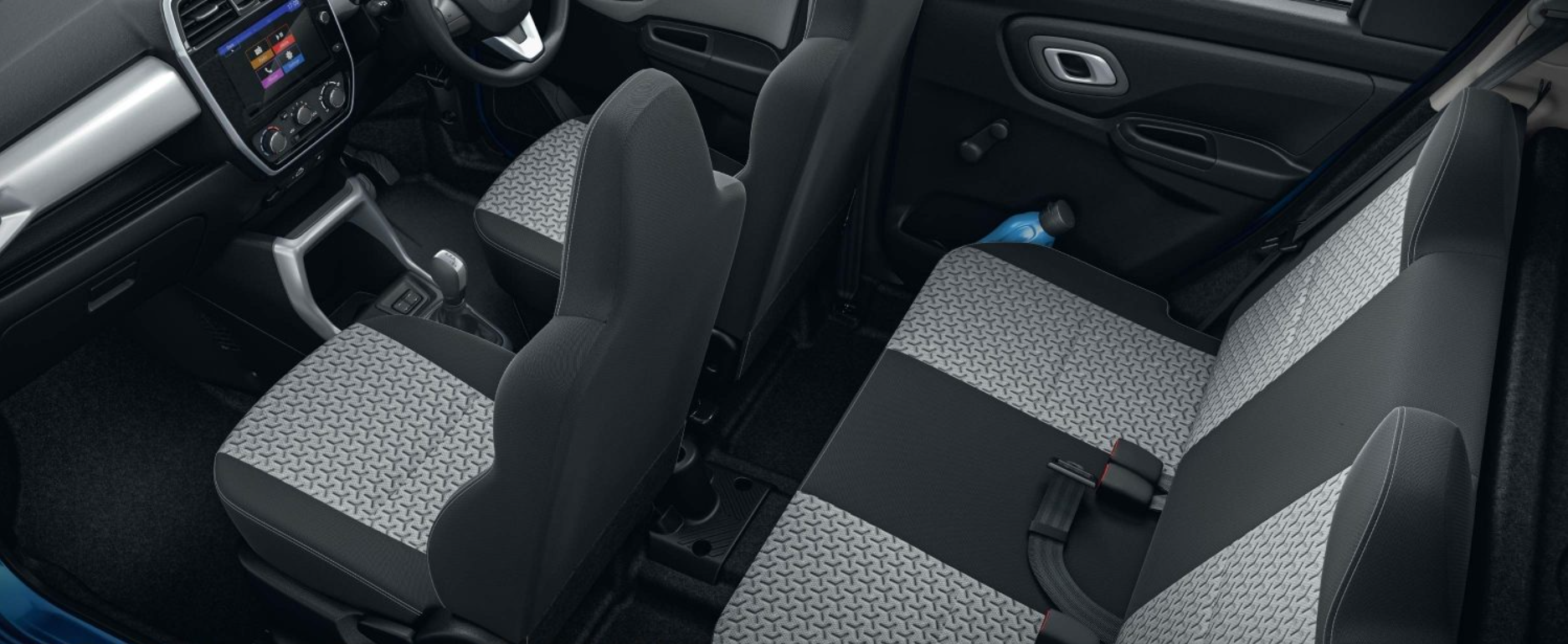
Then there’s the fact that the shoulder room for rear passengers is lacking, even though legroom is decent for a car this size. As for boot space, the redi-Go has a minimum cargo volume of 222 liters – extendable to 514 liters with the rear bench folded. The interior of the Datsun redi-Go might be made out of cheap materials, but it doesn’t look like it. Since it is a tall boy, headroom isn’t something you will be complaining about.

The Datsun redi-Go has enough features to keep buyers engrossed for a while post-purchase. After that, it will be business as usual.
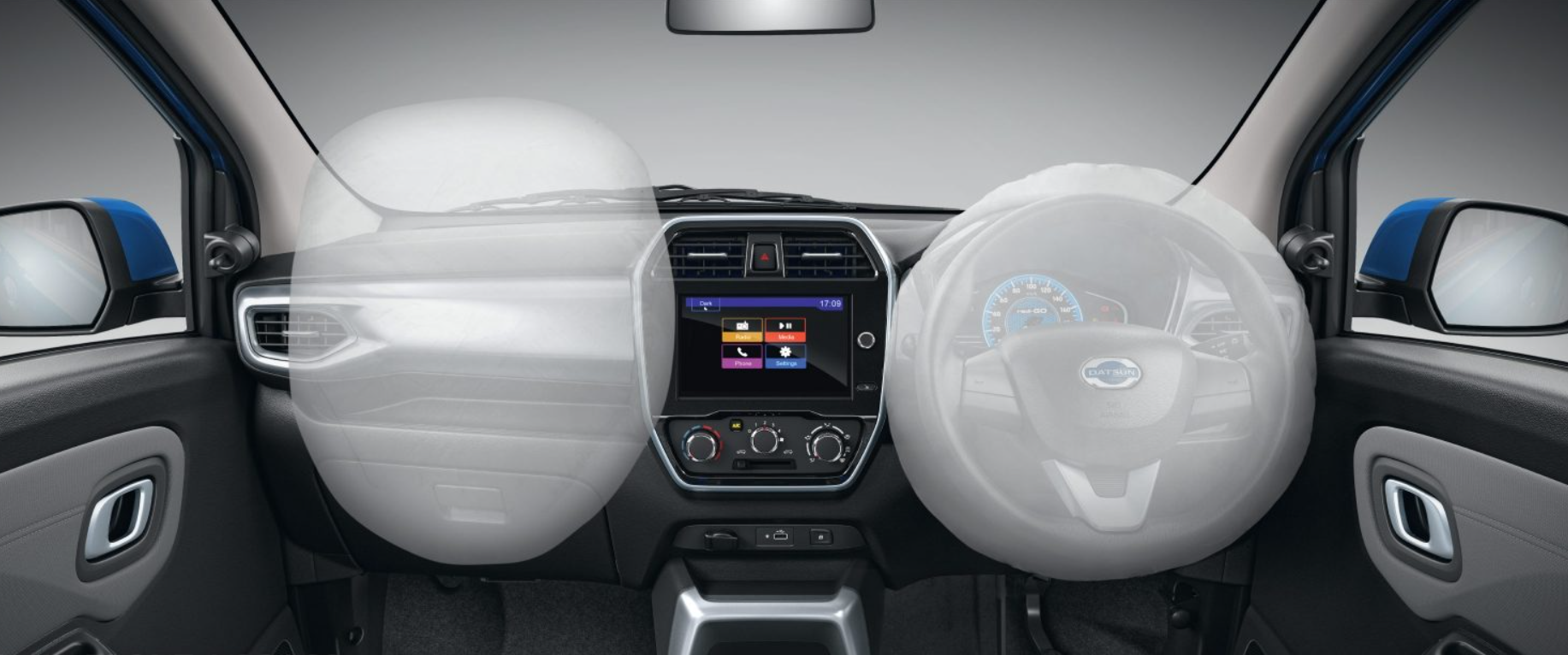
While it may be cheaper than your next international trip, the Datsun redi-Go gets the basics almost right. The hatchback comes with a driver’s-side airbag, ABS with EBD, central locking, rear parking sensors, child-safety lock, front seatbelt reminder, overspeed warning, and an engine immobilizer. If you go for a higher variant, you will also get a co-driver’s airbag, while the fully-loaded redi-Go gets a reversing camera projection guide.
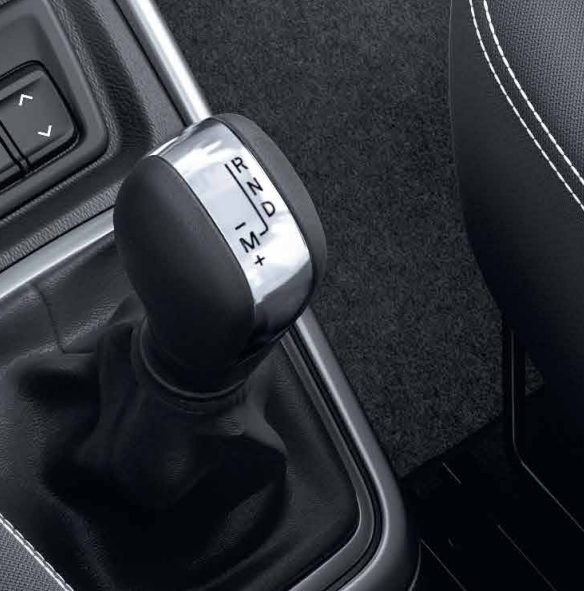
The Datsun redi-Go can be had with two petrol engine options. There’s the base 799cc unit that produces about 54 horsepower and 72Nm of maximum torque, while a 999cc mill comes with 67 horsepower and 91Nm of peak torque. Among transmissions, buyers can choose between a 5-speed manual and a 5-speed AMT gearbox. Irrespective of which engine you get, these two transmissions will be available.
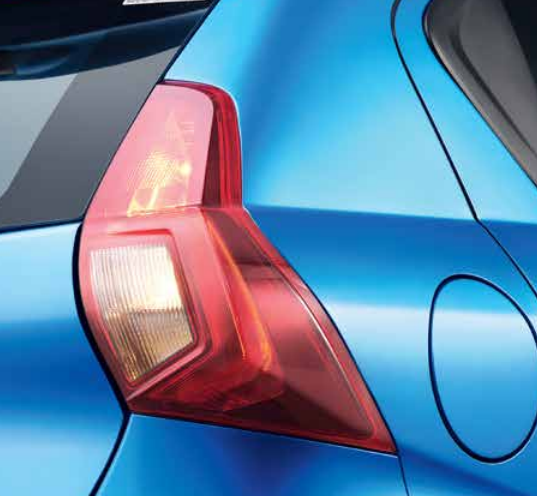
Of course, the Datsun redi-Go is also meant to be fuel efficient. If you go with the manual, you can expect a mileage of between 20.71 to 21.7 kpl. As for the AMT model, fuel efficiency climbs to 22 kpl. As with many AMTs in this segment, the one in the Datsun redi-Go has been tuned for maximum frugality instead of outright performance. With a top speed of 135 kph, this hatchback won’t be setting any records.
Forget the 800cc variant, and go straight for the one with the healthier 1.0-liter engine. It not only feels less strained but its performance and mileage are also better.
| Model | Datsun redi-Go 0.8L | Datsun redi-Go 1.0L |
| Engine | 799cc Naturally-Aspirated Three-Cylinder Petrol | 999cc Naturally-Aspirated Three-Cylinder Petrol |
| Horsepower | 54hp | 67hp |
| Torque | 72Nm | 91Nm |
| Transmission | 5-speed Manual | 5-speed Manual/5-Speed AMT |
| Drive Configuration | FWD | FWD |
| 0-100 Km/H | 16.1 Seconds | 14.6 Seconds |
| Top Speed | 135 Km/H | ~ 145 Km/H |
| Mileage | 20.71-21.7 Km/L | 22 Km/L (AMT) |
| Fuel Tank | 28 Liters | 28 Liters |
| Curb Weight | ~ 650 Kg | ~ 685 Kg |
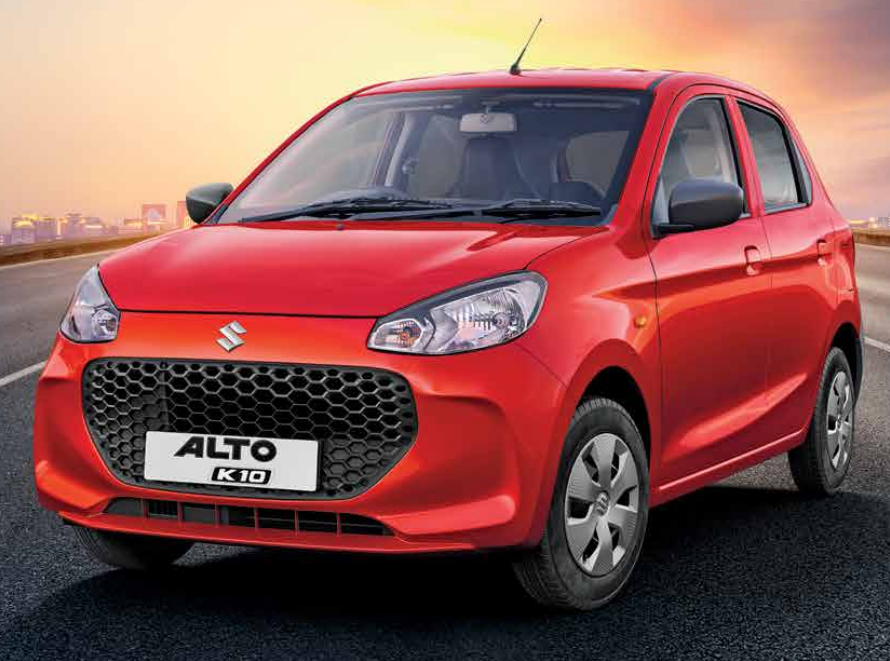
Where the Alto 800 serves as the cheapest car from Maruti’s stable, the new K10 model promises more but for a bigger chunk of your bank balance. The first generation of the Alto K10 was launched in India in 2010, with an update arriving in 2014. However, the latest Maruti Suzuki Alto K10 has just been launched, and it is based on the brand’s Heartect platform. For small families in various cities and towns, the new Alto K10 will continue to be a good primary car.
| Maruti Suzuki Alto K10 Petrol Variants |
| STD Manual |
| LXI Manual |
| VXI Manual |
| VXI+ Manual |
| VXI AGS |
| VXI+ AGS |
The new Maruti Suzuki Alto K10 comes in colors such as Metallic Granite Grey, Metallic Sizzling Red, Premium Earth Gold, Metallic Silky Silver, Metallic Speedy Blue, and Solid White.
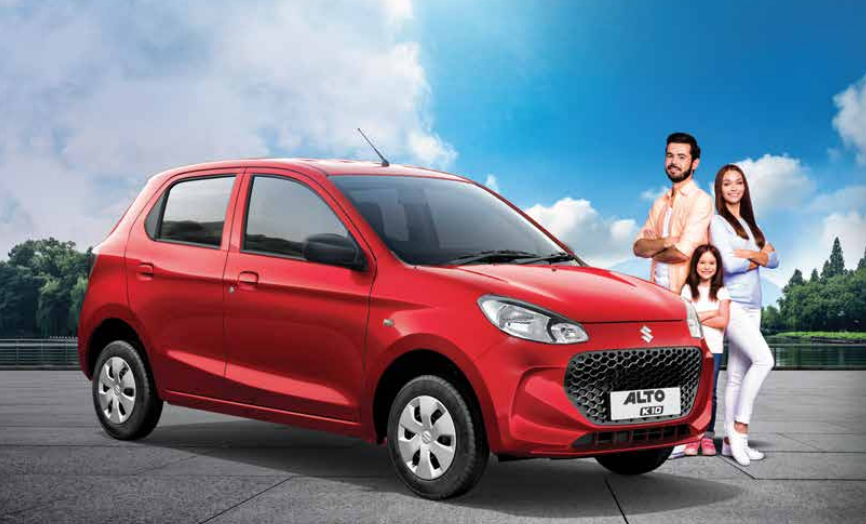
Unlike before, the difference in the exterior design of the Alto 800 and Alto K10 is quite remarkable. The new Alto K10 is longer, taller, and boasts a 20mm longer wheelbase over the former. The front end of the car comes with a new and larger honeycomb grille that’s finished in black, while the lower apron has been sculpted to make it look more upmarket. Having said that, the design of the headlamps is pretty bland and doesn’t really stand out.
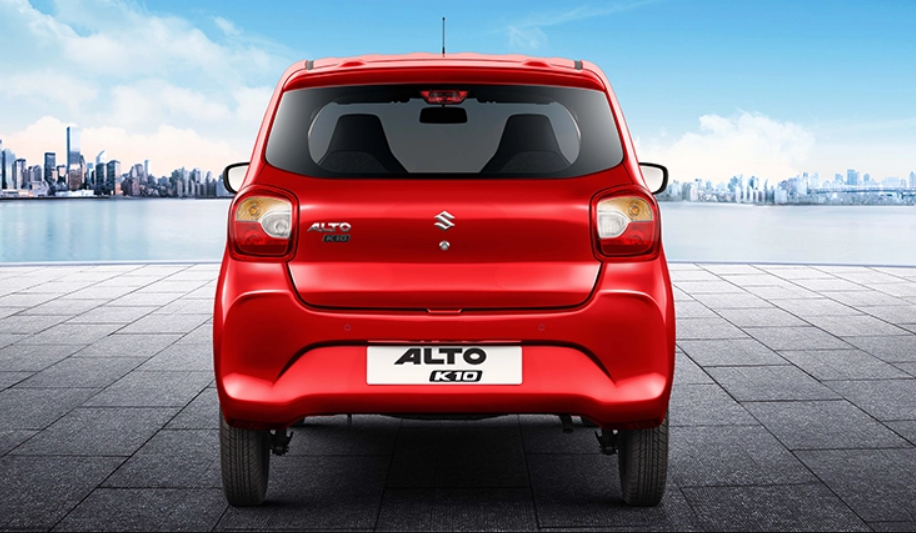
Around the side, the new Alto K10 stands tall, but the small 13-inch wheels don’t fill up the wheel well. The tires are also skinny to aid fuel efficiency, and this makes the whole car look like it is tip-toeing. Similar to the Alto 800, this one too has the exact same character lines and door handles, though the roofline and windows are different. The rear gets square-ish tail lamps that are rather boring-looking, a ‘K10’ badge, and a mildly-tweaker bumper. While it is more visible than before, the new Alto K10’s design isn’t particularly exciting.
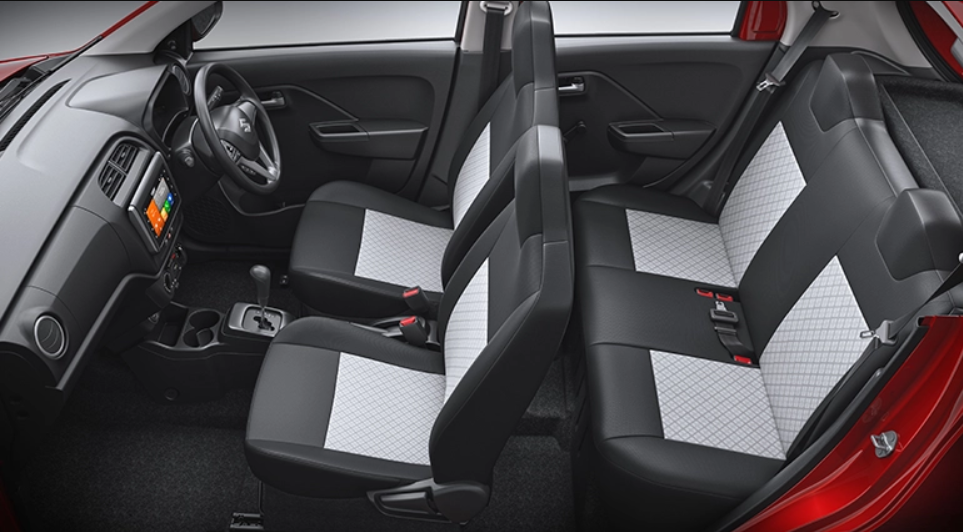
Due to its tall body, it is relatively easy to get in and out of the new Alto K10. Once inside, you will be greeted by dark grey plastic trim and dual-tone seat fabric. Breaking some of this monotony is shinier bits located on the steering wheel, door handles, around the side AC vents, and surrounding the infotainment screen. Practicality comes in the form of a couple of cupholders and another storage bin just ahead of them, with one-liter bottle holders located in the front door pockets.
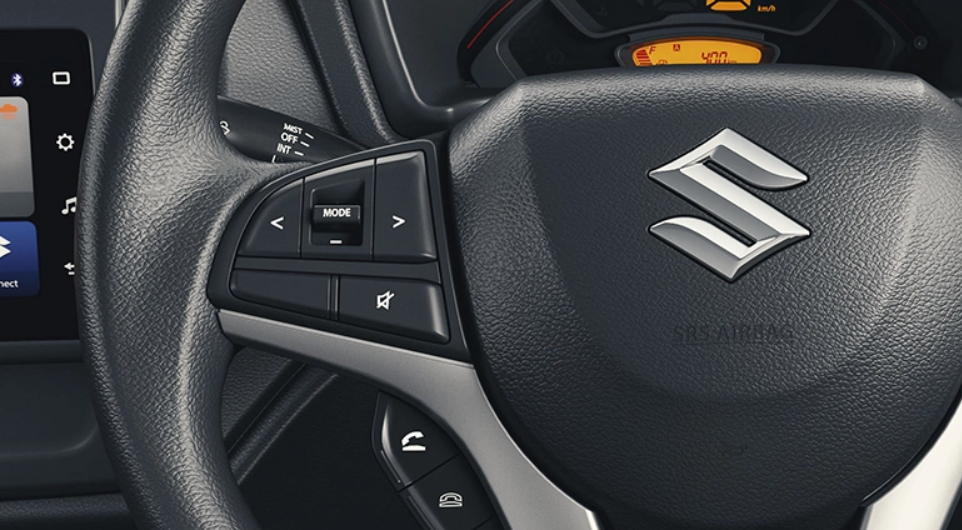
The cabin of the new Alto K10 is just as narrow as its 800 sibling, which means that it’s best suited to carry just four people. The seats get fixed headrests, but they are good enough if you are not on the larger side. Their bolstering and squabs feel positively low-budget, but they get the job done. The higher seating position and big windows of the new Alto K10 make for easy driving in tight urban spaces, whilst headroom for those at the back is good too. Even the boot space is good, at 214 liters.
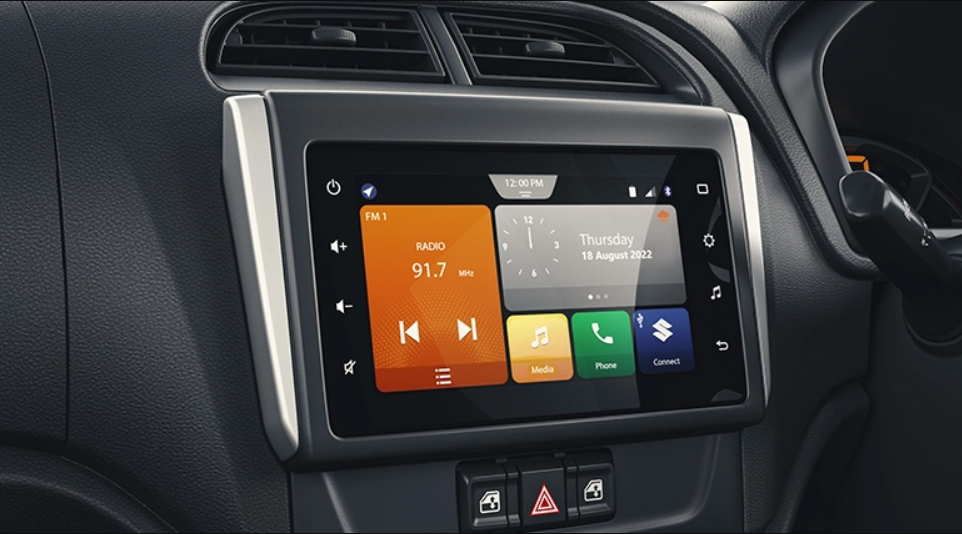
Despite being newer and more expensive than the Alto 800, this K10 model doesn’t technically get that many more features. That said, it does get more than the bare minimum, which many will appreciate.
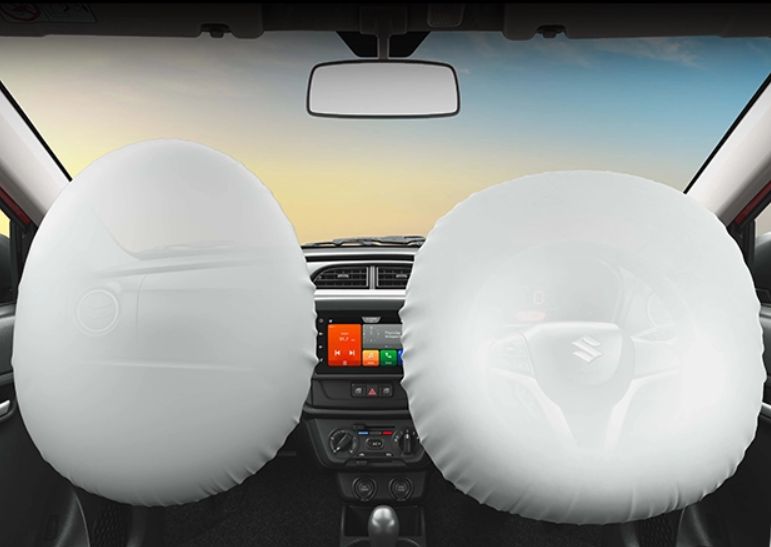
According to Maruti Suzuki, the Heartect platform has made the new Alto K10 safer than the old car. Bolstering the sense of security in this hatchback are features like ABS with EBD, reverse parking sensors, dual airbags, front seatbelts with pre-tensioners, speed-sensitive auto door lock, and a collapsible steering column.
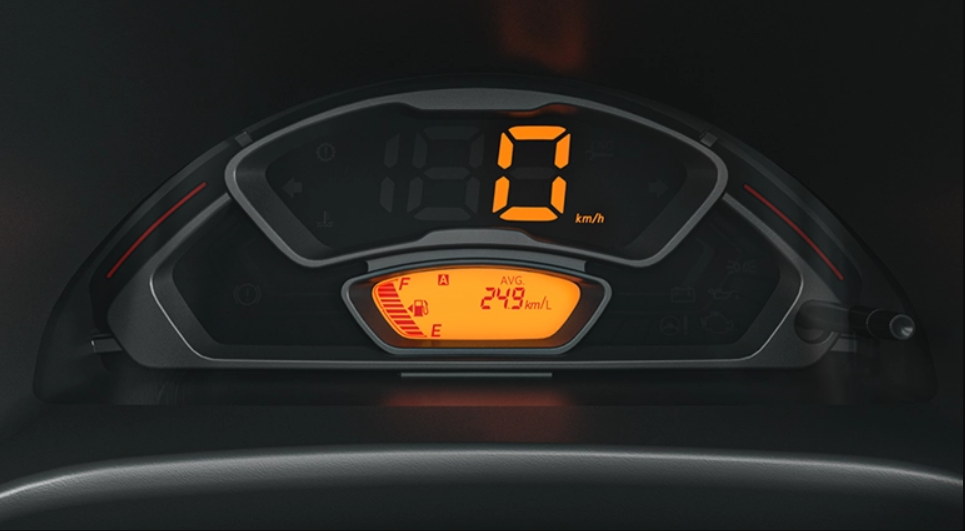
Compared to its predecessor, the new Alto gets the K10C mill that has been tuned more for mileage and reduced emissions than for performance. The 998cc three-popper is good for over 65 horsepower and 89Nm of pulling force. Buyers can choose between a 5-speed manual or a 5-speed AGS (Maruti lingo for an AMT gearbox).
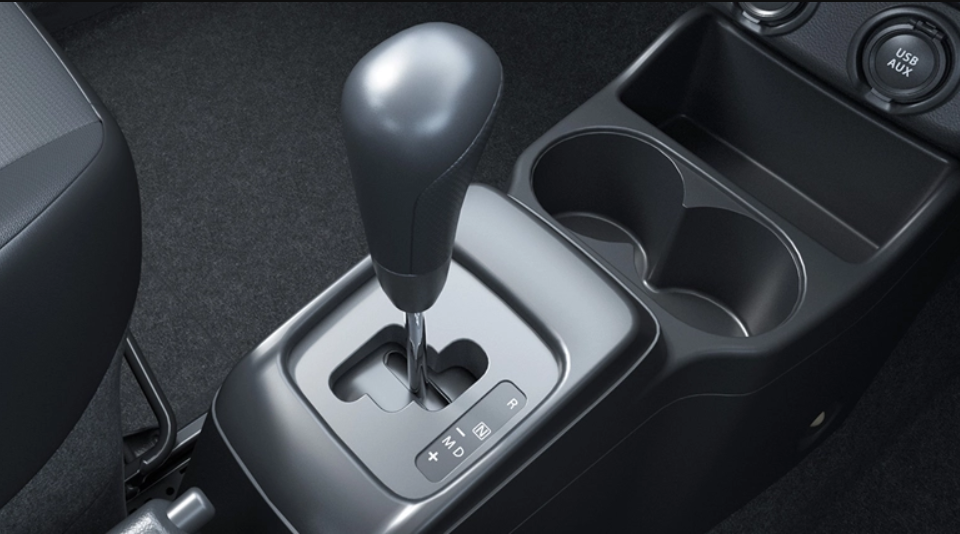
Gone are the days when manual gearboxes were more frugal than their automated counterparts. Maruti Suzuki’s engineers have fiddled with the Alto K10’s AGS transmission, allowing it to lay claim to an ARAI fuel economy rating of 24.90 kpl – 0.51 kpl better than the manual version. The top speed of the new Alto K10 manual is 145 kph, though the car feels safer and relatively settled when driven below 110 kph. Meanwhile, the run from 0 to 100 kph takes around 13.5 seconds.
If the majority of your driving is going to be within the city and you want to feel more relaxed, then we think the VXI AGS is the way to go. However, the LXI variant of the Alto K10 is priced more reasonably.
| Model | Maruti Suzuki Alto K10 |
| Engine | 998cc Naturally-Aspirated Three-Cylinder Petrol |
| Horsepower | 65.7hp |
| Torque | 89Nm |
| Transmission | 5-speed Manual/5-Speed AMT |
| Drive Configuration | FWD |
| 0-100 Km/H | 13.3 Seconds (MT) |
| Top Speed | ~ 145 Km/H |
| Mileage | 24.39-24.90 Km/L |
| Fuel Tank | 27 Liters |
| Curb Weight | 730-850 Kg |
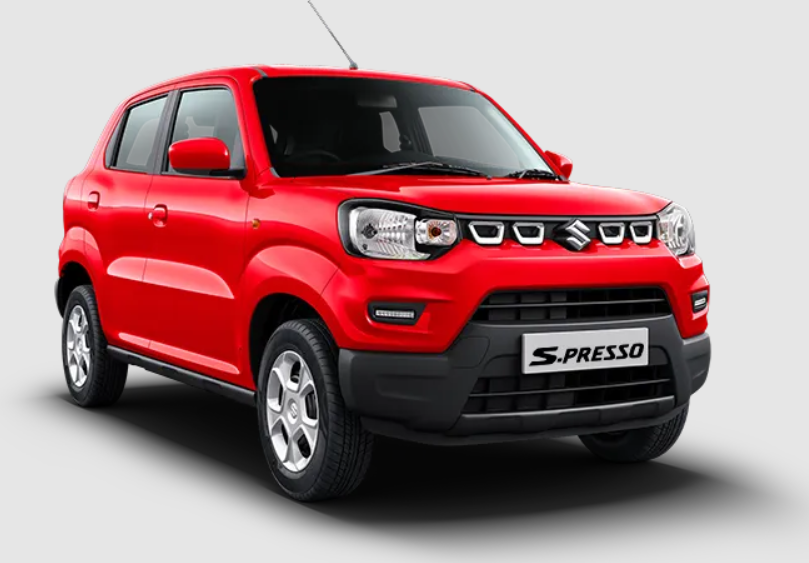
Based on the same Heartect platform as the new Alto K10, the S-Presso is Maruti Suzuki’s answer to the likes of the Renault Kwid. The so-called “Mini SUV” was launched in India in 2019, and since then, it has sold in good numbers. While it has been mainly aimed at youngsters, the S-Presso will suit small families well too. Much of the car’s success has been attributed to its affordable price tag and SUV-like design.
| Maruti Suzuki S-Presso Petrol Variants |
| STD Manual |
| LXI Manual |
| VXI Manual |
| VXI+ Manual |
| VXI (O) AGS |
| VXI+ (O) AGS |
Depending on the variant you choose, the S-Presso can be had with almost nothing to some more-than-basic features. Your exterior color options on the S-Presso include Solid Fire Red, Solid Sizzle Orange, Pearl Starry Blue, Metallic Silky Silver, Metallic Granite Grey, and Solid White.

One of the main draws of the Maruti Suzuki S-Presso is its ‘SUV-inspired’ exterior design. People love cars that are tall and look like it can tackle any type of terrain, even if the latter may not actually bore any truth. Among all of its angles, the best one on the S-Presso is unarguably its front end. The main grille design looks bold and stylish, albeit similar to what Mahindra has on its new cars.

The chrome-garnished grille is accompanied by halogen headlights that are designed to resemble a twin-chamber setup, whilst the high bonnet and dual-stacked intakes lead to a good first impression. Likewise, the muscular front bumper gets sleek LED DRLs along with an unpainted but butch-looking lower apron. Other cosmetic touches include flared fenders, deep & squarish wheel arches, a flat roof, short overhangs, and high ground clearance. The rear scores C-shaped taillights, a heavily-raked windscreen, and an unpainted bumper for that ‘SUV’ touch.
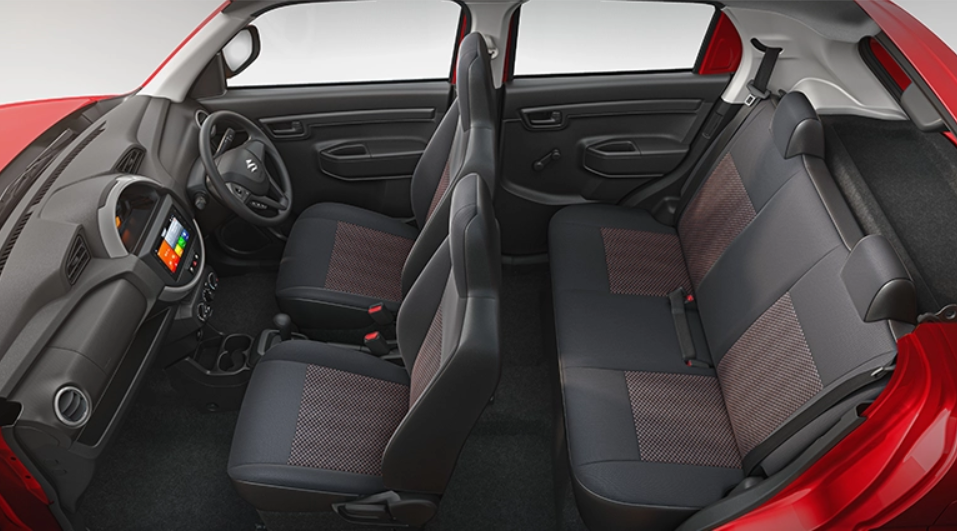
The doors of the S-Presso open pretty wide, so ingress and egress will be a doddle. The big windows let in plenty of natural light, and along with the high roof, there’s a good sense of space in this cabin. Of course, the high-set seating position provides for a great view outside, but the thick C-pillar creates a blind spot. And if you have three people in the back, looking directly behind you will also be an issue.
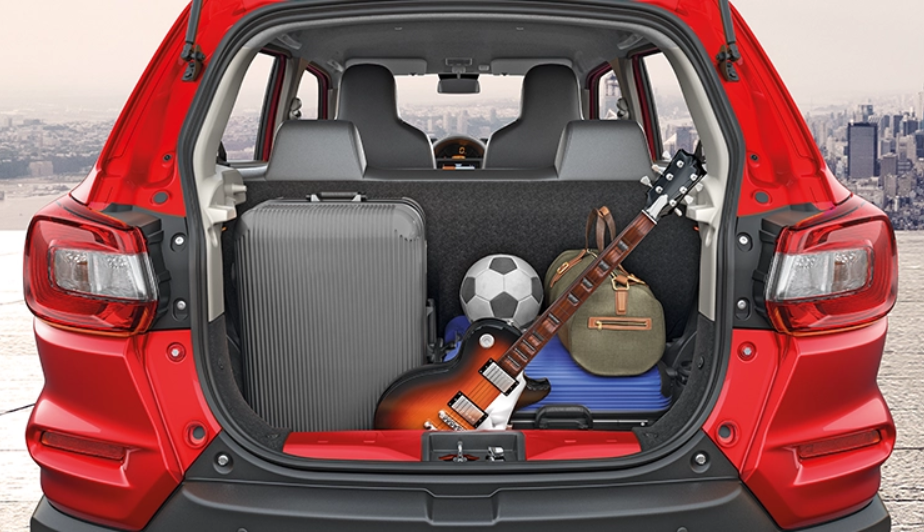
The seats provide decent side bolstering and under-thigh support upfront, but the rear seat squab is a bit too soft for adequate long-trip comfort. On the flip side, the rear legroom is good. The dashboard layout features a central unit that seems to be inspired by Mini, and it houses the main instrument cluster plus the infotainment head unit. While some may like this design, others will dislike it straight away. The multi-contour dash is a bit high, and the overall interior looks a tad too boring. Boot space is 240 liters – nothing to write home about.
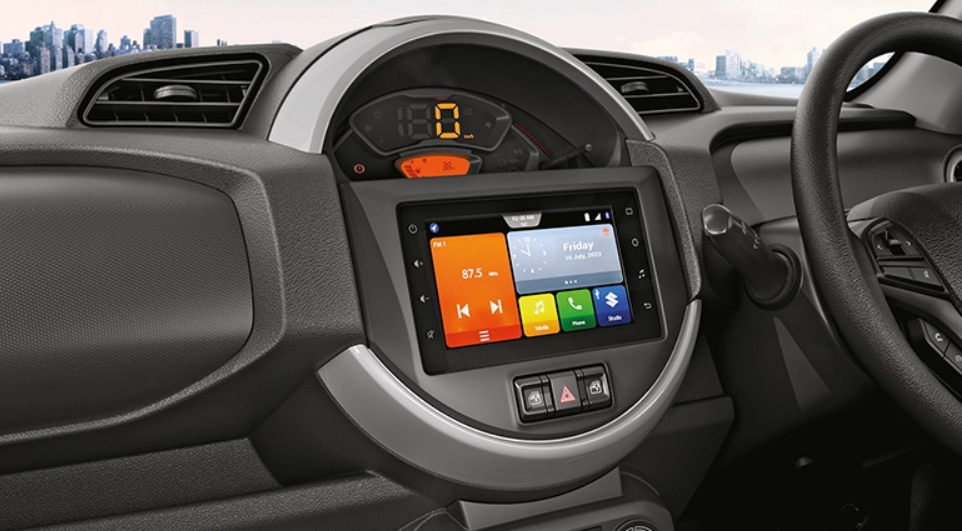
The features that are available in the S-Presso will never wow you, but there’s all the basic equipment to be found here.

Part of the S-Presso’s safety equipment, there are dual front airbags, rear parking sensors, and ABS with EBD. The car can also be had with ESP with Hill Hold Assist, seatbelt reminder, central door locking, Speed Alert System, child-safety lock, and speed-sensitive auto door lock.
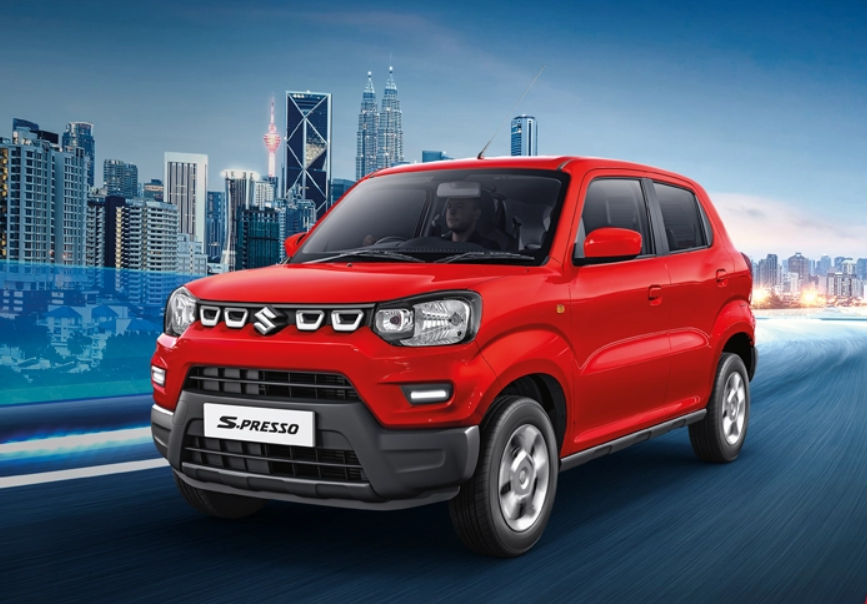
Under the stubby bonnet of the S-Presso lies the same three-cylinder K-Series petrol engine that powers the Wagon R and Alto K10. In the S-Presso, this engine puts out an identical 65.7 horsepower and 89Nm of torque – the same as in the hatchbacks. Also similar are the transmissions on offer, a 5-speed AMT & manual gearboxes.
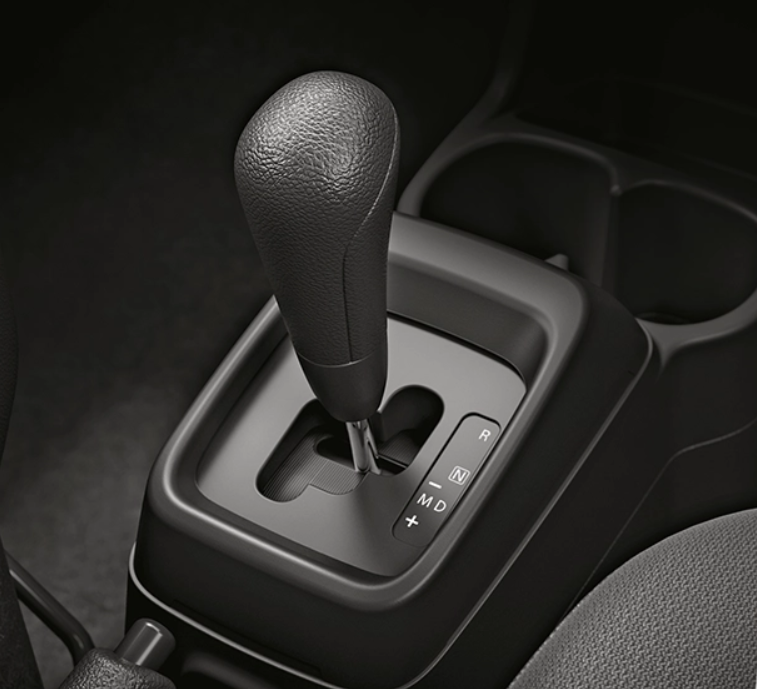
Given its tall body, the S-Presso’s top speed is not that high, at around 145 km/h. Then again, you wouldn’t want to go too fast in this car as it lacks that confidence-inspiring feeling at higher velocities. The run from 0 to 100 kph takes about 13.5 seconds, while fuel economy ranges from 24.12-25.30 kpl.
Out of the lot, the VXI+ represents the best value in terms of equipment on offer and some extra cosmetic additions over lower variants.
| Model | Maruti Suzuki S-Presso |
| Engine | 998cc Naturally-Aspirated Three-Cylinder Petrol |
| Horsepower | 65.7hp |
| Torque | 89Nm |
| Transmission | 5-speed Manual/5-Speed AMT |
| Drive Configuration | FWD |
| 0-100 Km/H | 13.4 Seconds (MT) |
| Top Speed | 145 Km/H |
| Mileage | 24.12-25.30 Km/L |
| Fuel Tank | 27 Liters |
| Curb Weight | 736-775 Kg |

India is not particularly known for its affinity for people carriers. Despite that, cars like the Toyota Innova and Maruti Suzuki Ertiga sell in massive numbers. They are quite expensive, though. To counter this, iconic Japanese brand Datsun came up with the Go+. Built on the Go hatchback’s underpinning, the Datsun Go+ is the country’s cheapest 7-seater right now. The company doesn’t term it to be of a proper 7-seater configuration but a “5+2”.
| Datsun Go+ Petrol Variants |
| D Manual |
| A Manual |
| A (O) Manual |
| T Manual |
| T (O) Manual |
| T CVT |
| T (O) CVT |
The Datsun Go+ is offered in variants that encompass cars that are bare-bones and decently-equipped – impressive for a budget 7-seater. Exterior paint varieties on the Go+ include Ruby Red, Bronze Grey, Sunstone Brown, Vivid Blue, Blade Silver, and Opal White.
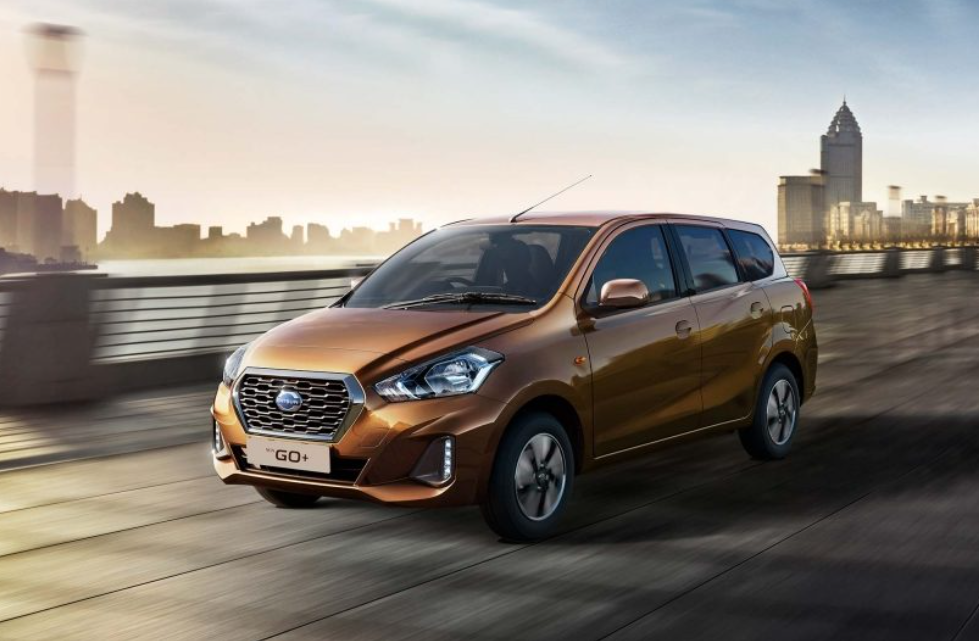
From the front, there’s little to distinguish the Go+ from its Go hatchback sibling. The broad grille gets chrome surrounds with the Datsun badge in the center, elongated but drama-free halogen headlamps, and a sportily-styled bumper with side recesses & LED daytime-running lights. The relatively-short hood leads to the car’s steeply-raked A-pillars and windshield, with the diamond-cut 14-inch alloys adding some more substance.
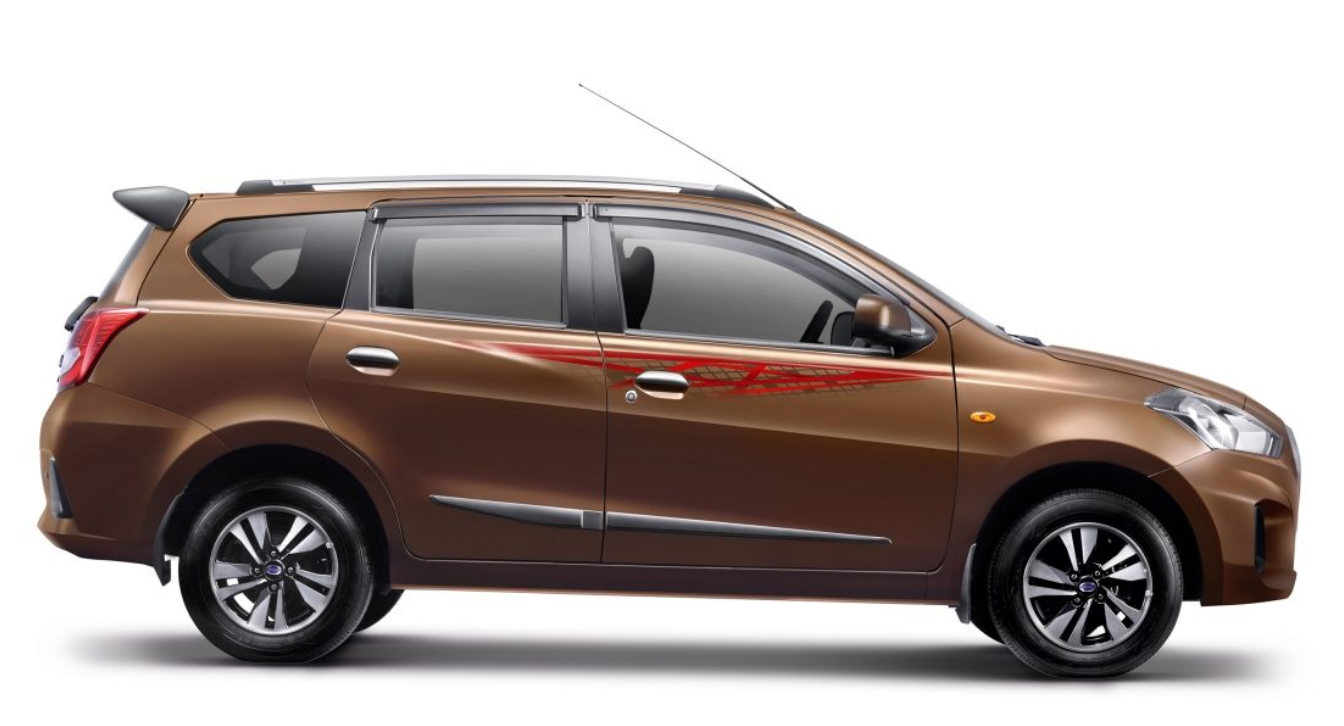
There is a strong character line running between the front and rear lights, whilst a pronounced haunch near the rear provides some much-needed visual heft to the car. The Go+ has visibly-extended front & rear overhangs, 180mm of ground clearance, and wheel wells that could have been better filled with larger wheels. Where the sloping roof and rising beltline look good, the oddly-proportioned rear half of Go+ comes across as ungainly and awkward.

For the Go+, Datsun has slightly redesigned the tail lamps and bootlid, with the bumper also featuring a couple of recesses with fake vents. Meanwhile, the Datsun logo and rear wiper seem to be fighting for the same part of real estate, with neither fitting in quite well. Let’s just say that the whole design is a bit forgettable.
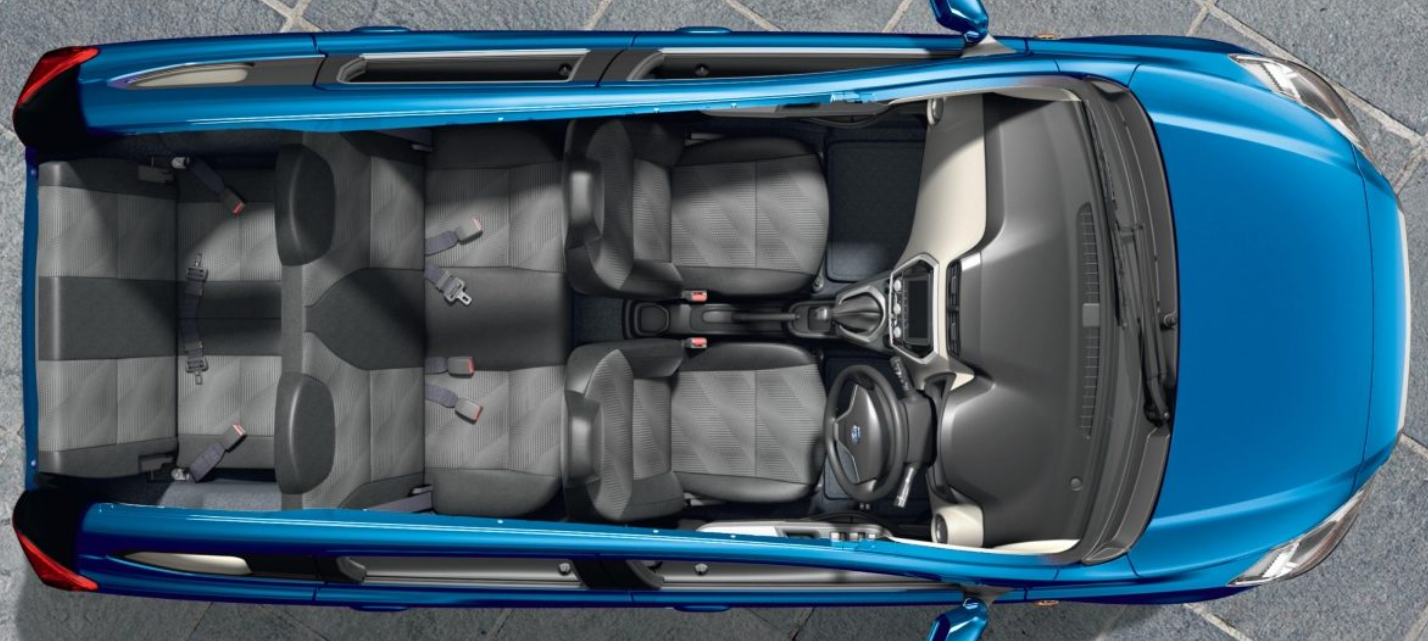
Getting into the rear-most seats of the Datsun Go+ is quite the adventure, especially since the middle row doesn’t get a split-folding mechanism. And once you are at the back, you will quickly realize that it’s only meant for small kids and that too for short trips. Then again, Datsun only calls this a “5+2”, so there’s no deceit going on here. If you do want to carry any significant luggage, fold down the third row and you will have access to 347 liters of cargo space.
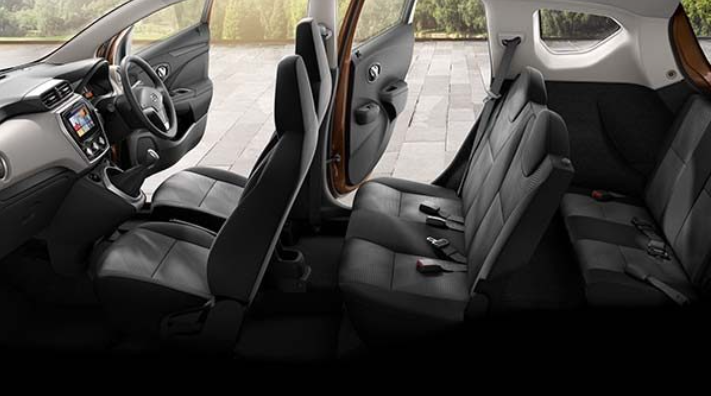
The ”Anti-Fatigue” seats in the Go+ are supposed to be comfortable and reduce fatigue on longer drives. These do work quite well, especially if you are sitting in the first or second row. On the flip side, there’s next to no headrest for those in the second or third row, which not only hampers overall comfort but also safety. Speaking of which, those in the third row are only provided manually-adjustable (pointless) seatbelts and barely any protection from rear collisions.
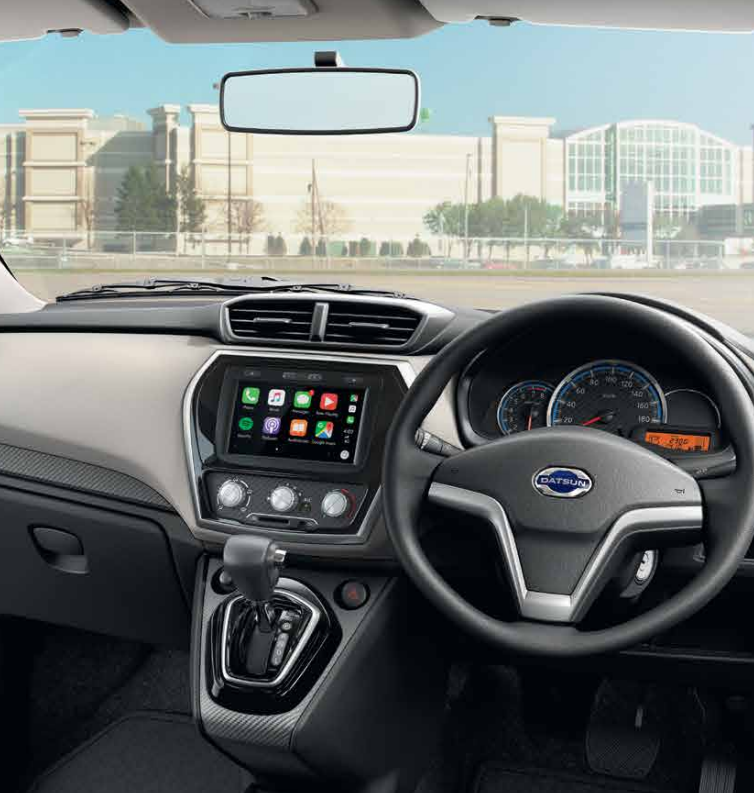
The new dual-tone theme of this cabin along with the large glass area leads to a sense of openness and space. There’s also generous use of piano black, silver & faux carbon-fiber trim in here. Datsun has designed a few storage cubbies that are decent, though there are no usable storage spaces for those in the second and third rows. To keep costs in check, cabin insulation in the Go+ is thoroughly lacking, and you will hear the engine and suspension at work almost the entire time. Of course, the general quality of the materials feels basic too.
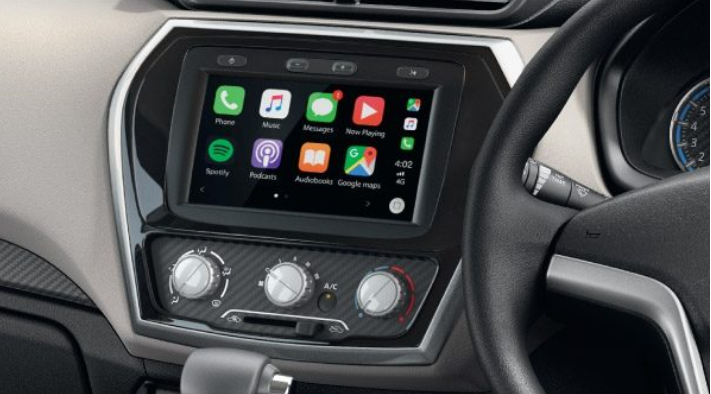
The Datsun Go+’s features are decent for a car that costs much less than any of its immediate rivals.
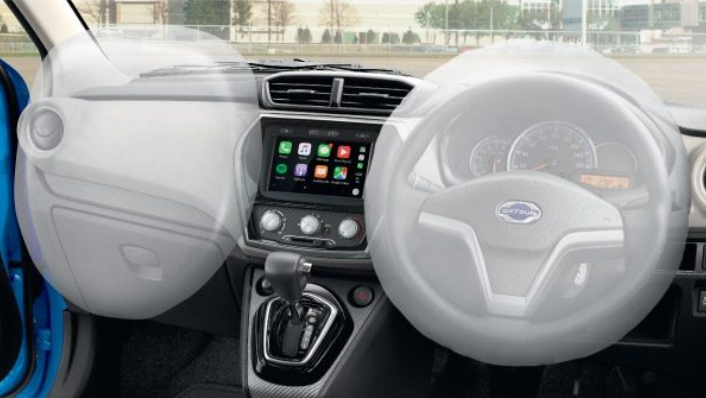
Datsun says the Go+ now meets side crash & pedestrian protection regulations, whilst adding speed-sensing auto door lock to its kitty as well. Its other safety measures include keyless entry, ABS with EBD and Brake Assist, dual front airbags, rear parking sensors, and even Vehicle Dynamic Control. Unfortunately, the lack of proper headrests and the aforementioned second- & third-row seatbelts are a real letdown.
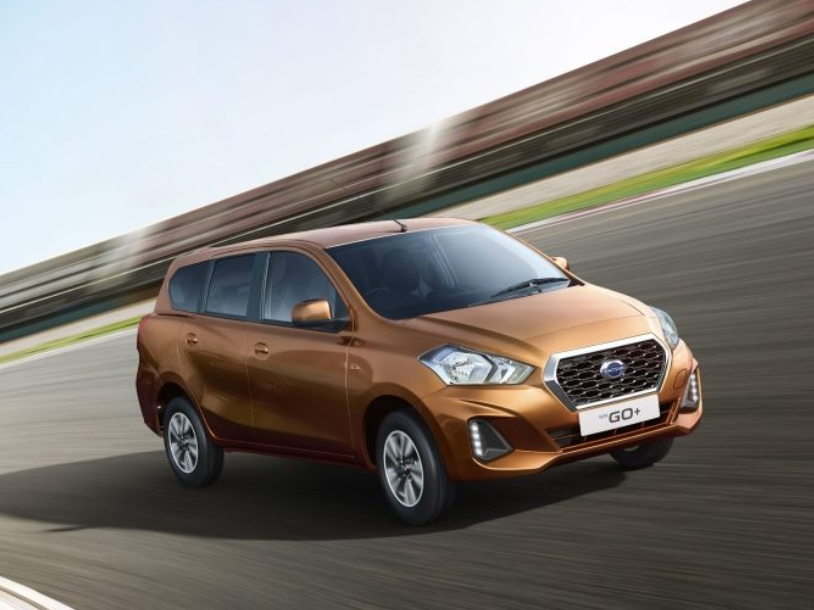
The Go+ comes with a 1.2-liter naturally-aspirated three-cylinder petrol motor that is equipped with electronic fuel injection and dual-overhead cams. The unit is mechanically sound and works well in almost any situation, and pumps out between 67 to 76 horsepower. The former is true for the variant with the 5-speed manual, while the latter is for the model with the CVT gearbox. As for torque, that figure peaks at 104Nm.

The Go+ has a claimed mileage of around 19 kpl for the manual and 18.5 kpl for the CVT variants, respectively. This Datsun people-carrier has a top speed of about 130 kph, while the ton-mark can be breached in approximately 14 seconds. On a side note, the near one-ton mass means the Datsun Go+ feels stable even at 100-110 kph. Go beyond those speeds, and that image will change quite rapidly.
According to us, the mid-spec T variant will be the best choice if you really want a Go+. It’s priced well and gets plenty of standard kit, too. Those that want the convenience of an automatic can go for the T CVT variant.
| Model | Datsun Go+ |
| Engine | 1198cc Naturally-Aspirated Three-Cylinder Petrol |
| Horsepower | 67-75.9hp |
| Torque | 104Nm |
| Transmission | 5-speed Manual/CVT |
| Drive Configuration | FWD |
| 0-100 Km/H | 13.9 Seconds (MT) |
| Top Speed | ~ 135 Km/H |
| Mileage | 19.02-18.57 Km/L |
| Fuel Tank | 35 Liters |
| Curb Weight | 904-950 Kg |
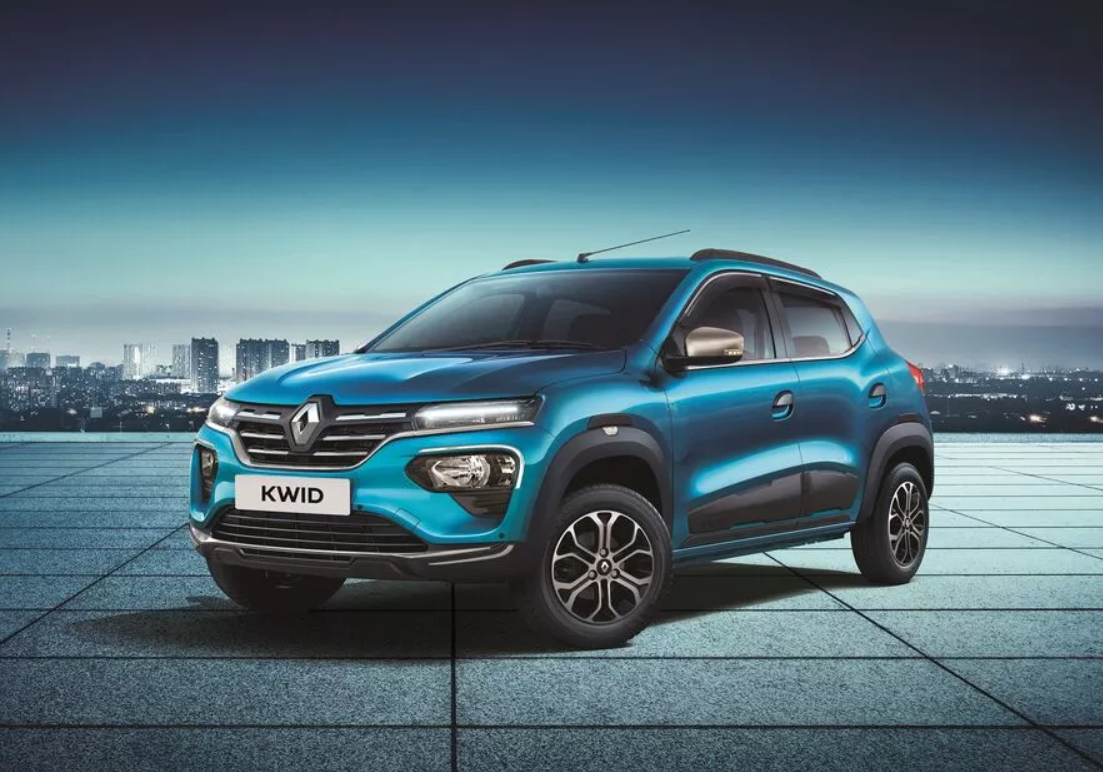
Arriving in the Indian market back in 2015, the Renault Kwid goes head-to-head with the likes of the Maruti Suzuki S-Presso and Tata Punch. The Kwid shares its underpinning with the Kiger, but it is by far the cheapest new car that Renault currently sells in India. Thanks to its recent facelift, the Renault Kwid has become an even more compelling option for those that want something affordable yet stylish.
| Renault Kwid Petrol Variants |
| RXL 0.8L Manual |
| RXL 1.0L Manual |
| RXL 0.8L (O) Manual |
| RXL 1.0L (O) Manual |
| RXT 1.0L Manual |
| Climber Manual |
| RXT 1.0L AMT |
| Climber AMT |
The Kwid comes in a variety of flavors to suit almost anyone’s needs, so finding one that suits you won’t be difficult. Buyers can choose the Kwid in one of six exterior colors – Moonlight Silver, Outback Bronze, Fiery Red, Zanskar Blue, Metal Mustard Dual Tone, and Ice Cool White Dual Tone.
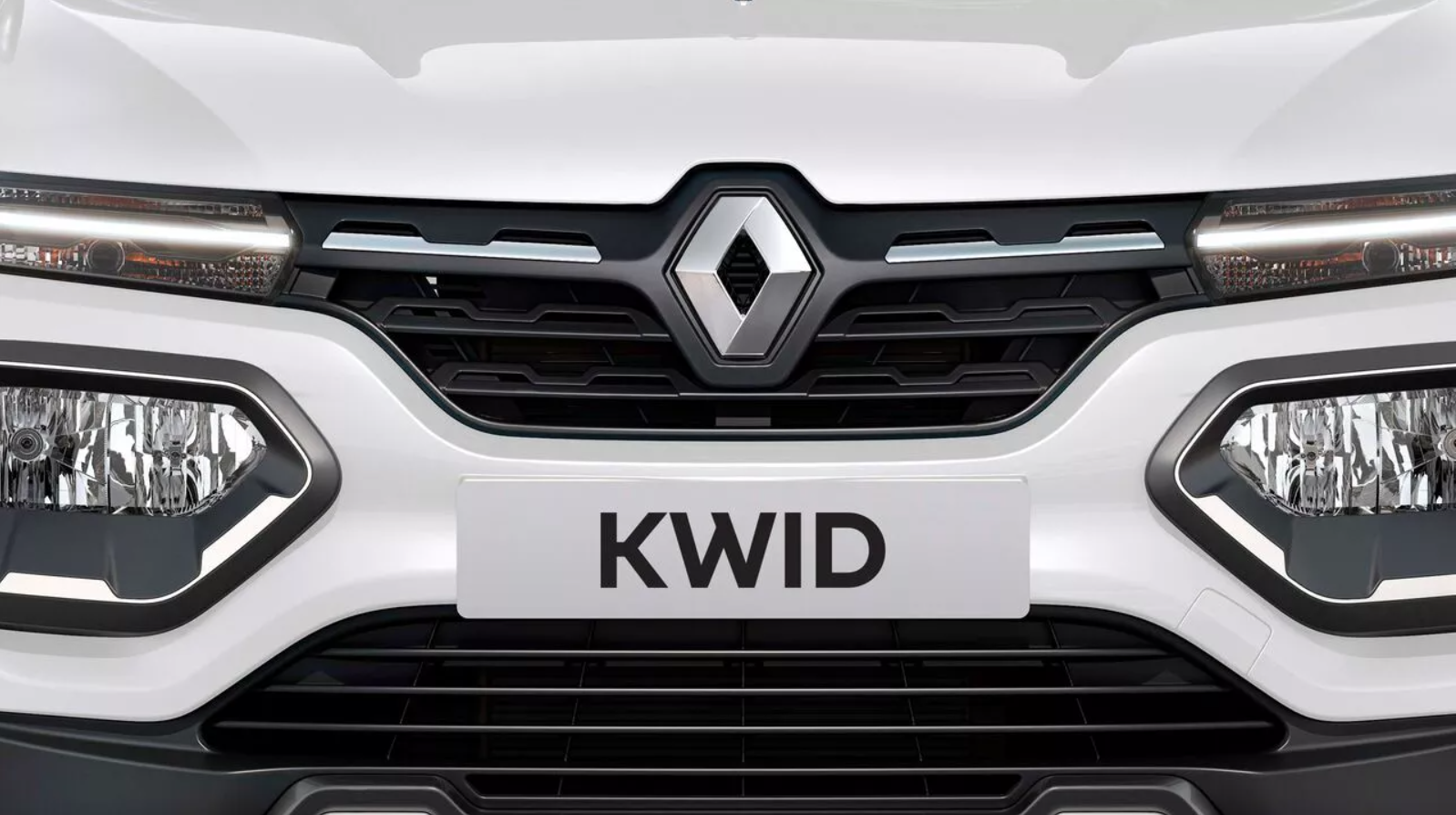
Regardless of the price, the Renault Kwid has an interesting and modern design language. The front fascia looks the most impressive as it gets an imposing grille that melts into the sleek LED DRL eyebrows. Then there’s the smart-looking bonnet, a dual-tone bumper that integrates some sporty-looking elements and deeply-recessed headlights. Overall, the Kwid certainly looks its best when viewed from the front.
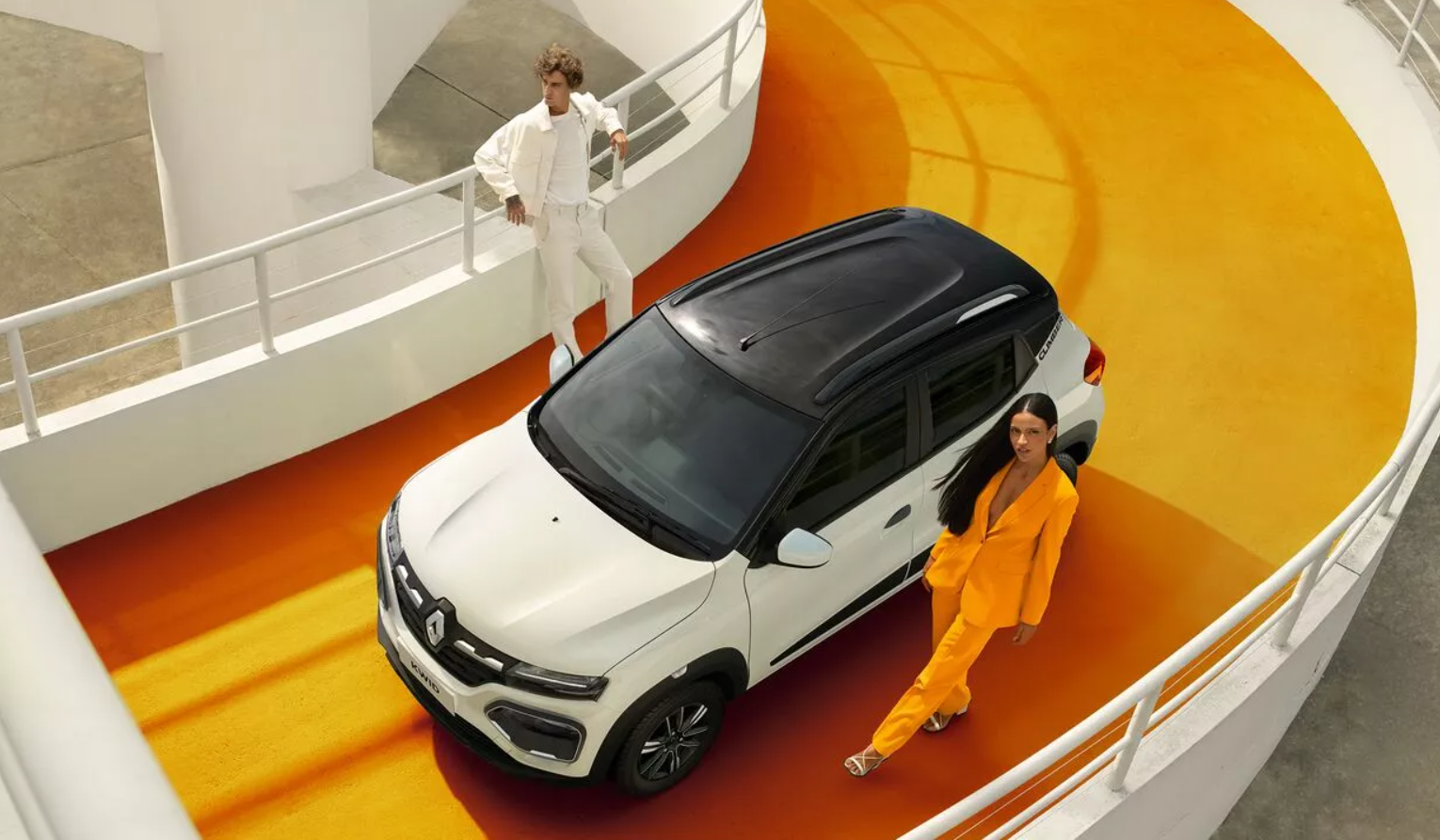
Keeping the ‘SUV’ aspirations alive are touches such as the roof rails, squared-off wheel arches with black cladding, thick door protection bars, flared fenders, 184mm ground clearance, ‘Climber’ decal on the C-pillar, and designer two-tone alloy wheels. The rear of the Kwid features black cladding on the bumper, and LED guide lights integrated into the tail lamps. Compared to the front or even the sides, the back of the Kwid isn’t particularly stylish.
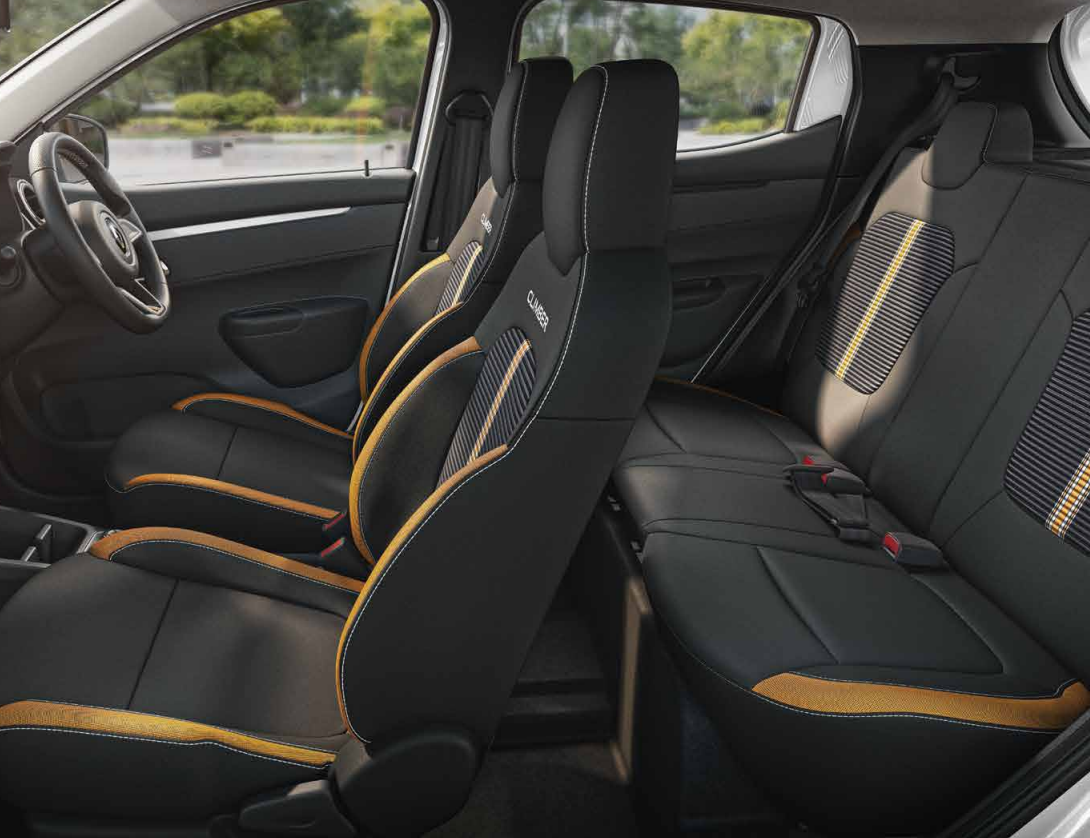
The Renault Kwid’s cabin is fairly practical with storage spaces in front of the rotary gear selector, a usably-deep glovebox, and 1-liter bottle holders in the front doors. As for luggage space, the Kwid packs in a 279-liter boot. Stepping in and out of the Kwid will not be a chore even for senior citizens, whilst the seats themselves provide a good amount of comfort and support. However, under-thigh support could have been better.
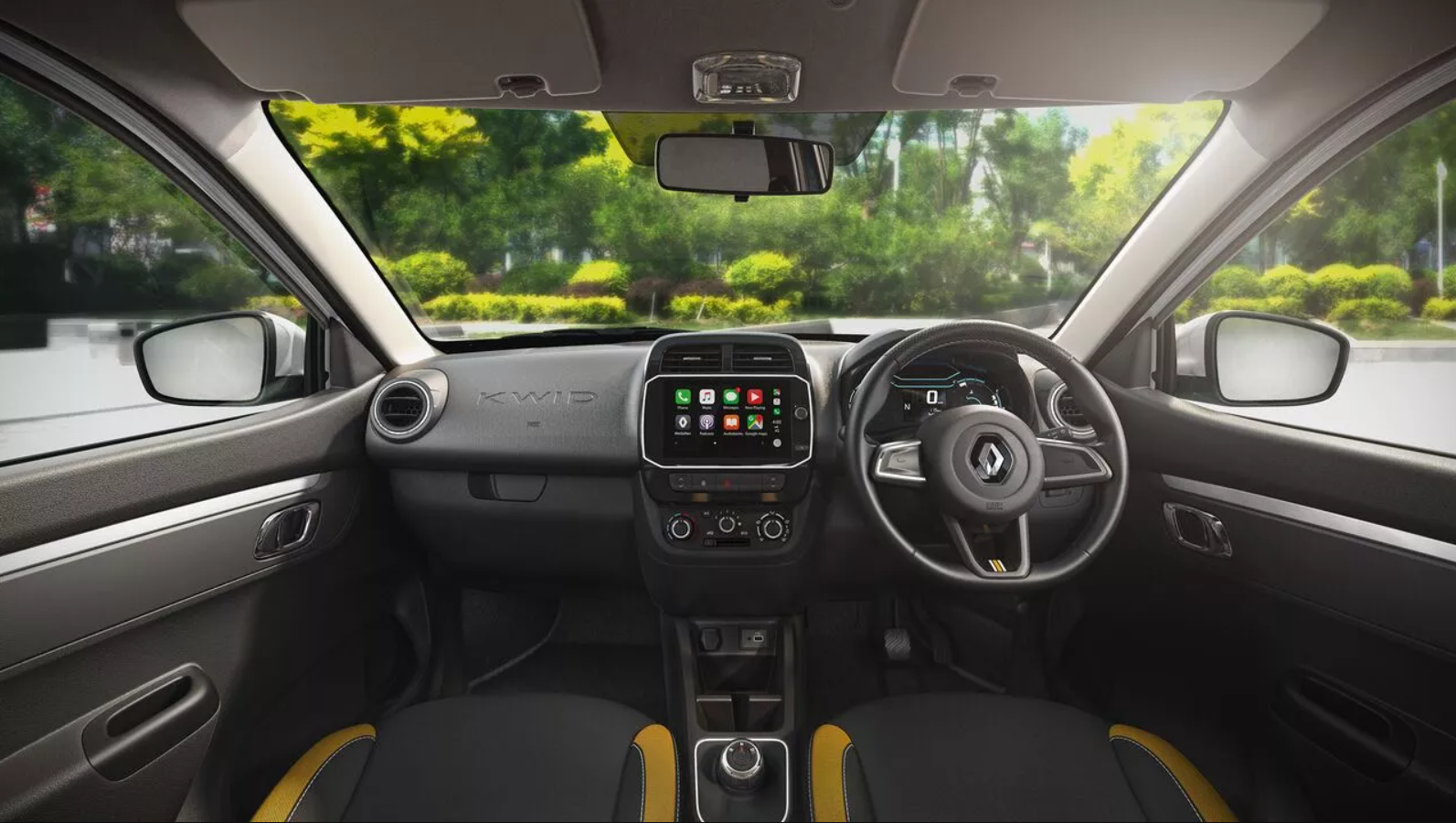
The seats also feature different textures, stitching & colors, though none get adjustable headrests. Up front, the dash features ‘Kwid’ lettering, with silver & chrome finish on several surfaces for that upmarket feel. The seating position here isn’t as high up as in the S-Presso, but the view out of the cabin is decent. When it comes to interior quality, there are obviously a lot of hard plastics in the Kwid.

The equipment list of the Renault Kwid is decent, and much of it works just as intended.
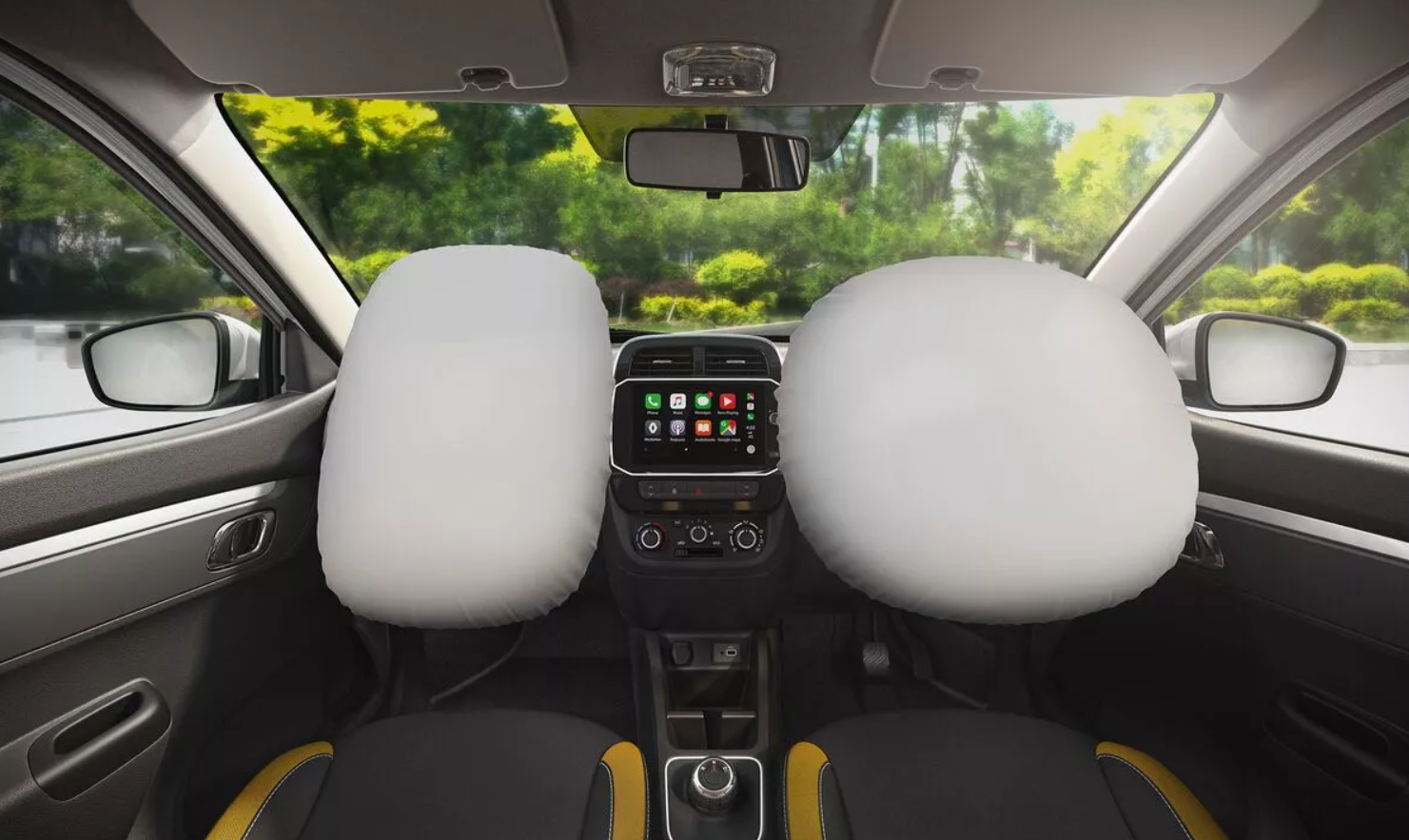
For its class, the Renault Kwid gets a decent set of safety features. For starters, you get dual airbags, ABS with EBD, and rear parking sensors. It also comes with overspeeding alert, speed-sensing auto door lock, central locking, front seatbelt reminders, day & night IRVM, and rear door child lock.
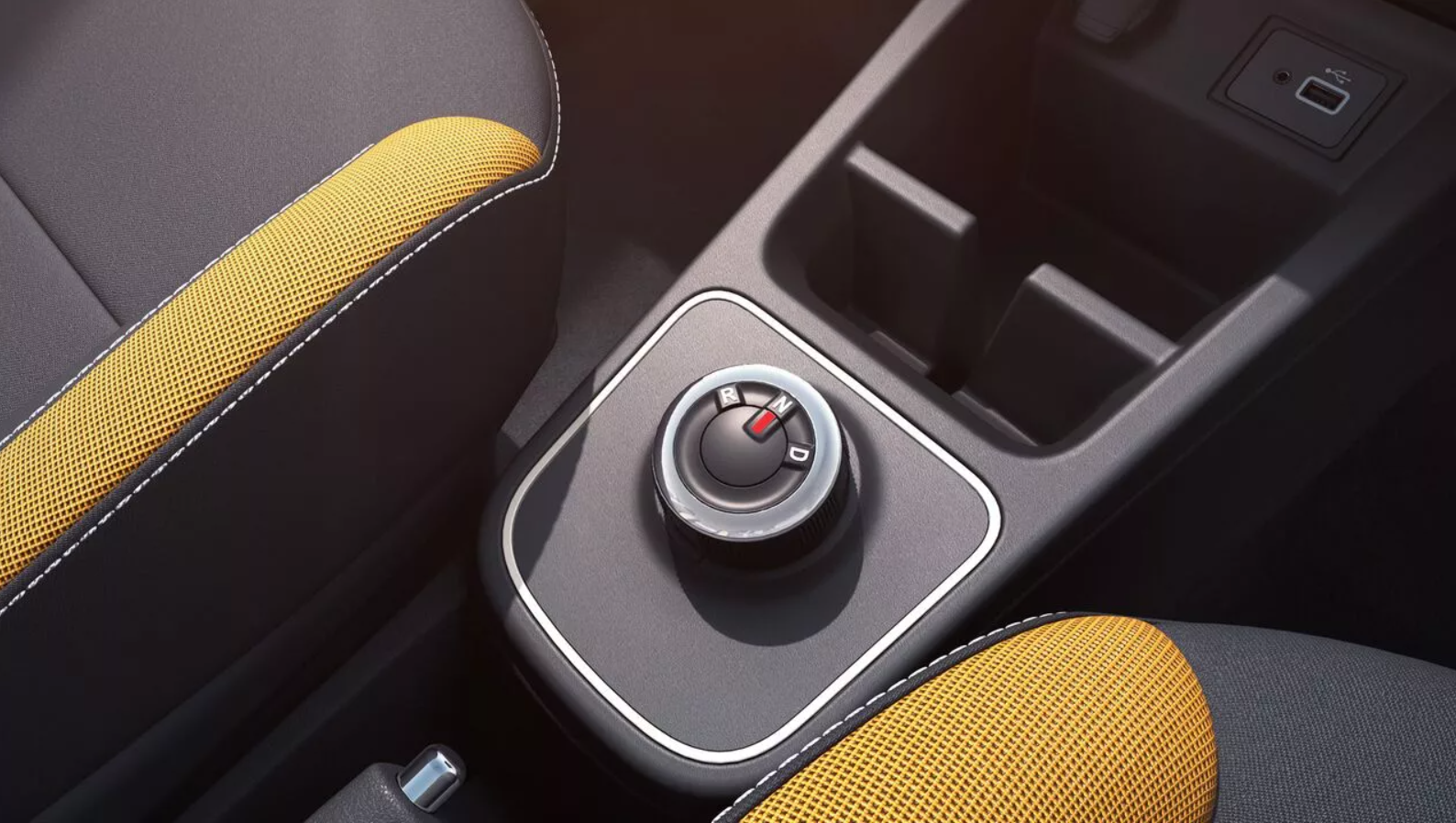
Renault offers the Kwid with two petrol powerplant options – 0.8-liter and 1.0-liter three-cylinder units. Both engines come mated to either a 5-speed manual or a 5-speed AMT gearbox. The Kwid 0.8L makes 53hp and 72Nm of maximum torque, while the bigger motor produces 67hp and 91Nm of twisting force. The latter is definitely the engine to go for if you want effortless progress and acceptable levels of refinement.

Depending on the engine, the Kwid can return an ARAI-rated mileage of between 22 kpl and 22.25 kpl. In its most powerful form, the Kwid can touch a top whack of around 155 kph, while 0-100 kph comes up in about 14 seconds. While it doesn’t feel particularly quick, the Renault Kwid 1.0L is not a slouch when driving in an urban setting.
The best version of the Kwid is the one with the 1.0-liter engine, whilst the Climber is the variant to go for.
| Model | Renault Kwid 0.8L | Renault Kwid 1.0L |
| Engine | 799cc Naturally-Aspirated Three-Cylinder Petrol | 999cc Naturally-Aspirated Three-Cylinder Petrol |
| Horsepower | 53hp | 67hp |
| Torque | 72Nm | 91Nm |
| Transmission | 5-speed Manual | 5-speed Manual/5-Speed AMT |
| Drive Configuration | FWD | FWD |
| 0-100 Km/H | 16.3 Seconds | 14.1 Seconds |
| Top Speed | 140 Km/H | ~ 155 Km/H |
| Mileage | 22.25 Km/L | 22-22.02 Km/L |
| Fuel Tank | 28 Liters | 28 Liters |
| Curb Weight | ~ 670-700 Kg | ~ 705-740 Kg |
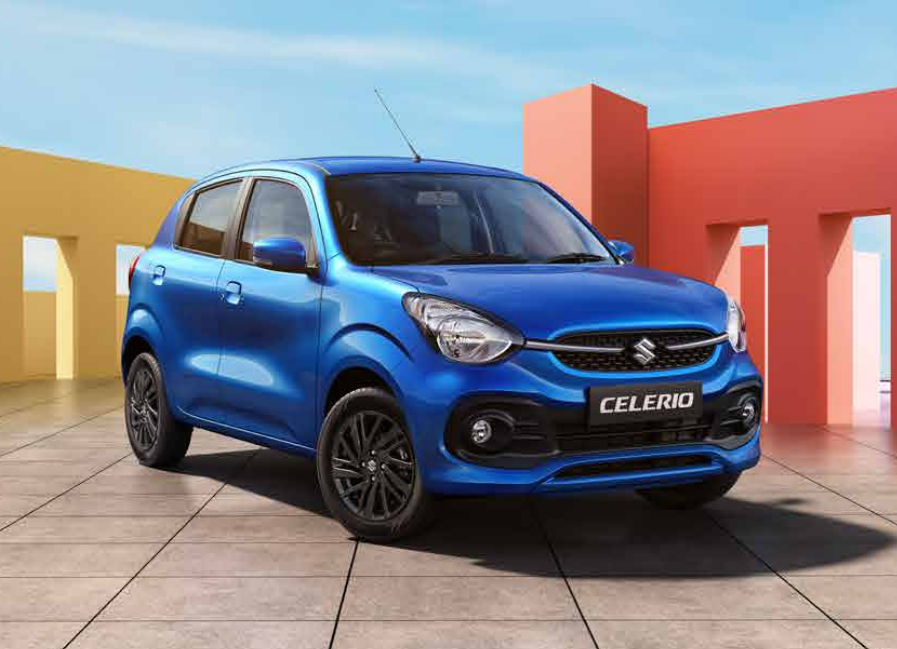
In Maruti Suzuki’s line-up, the Celerio is slotted above the Alto K10 but below the Wagon R. Newer than both those nameplates, the latest-gen Celerio got a complete overhaul only recently. The changes that have been made to the hatchback not only make it more appealing than before but also a better car in many ways. Just like other new Maruti cars, the new Celerio is based on the Heartect platform.
| Maruti Suzuki Celerio Petrol Variants | Maruti Suzuki Celerio CNG Variants |
| LXI Manual | VXI Manual |
| VXI Manual | |
| VXI AGS | |
| ZXI Manual | |
| ZXI AGS | |
| ZXI+ Manual | |
| ZXI+ AGS |
There are more than enough variants of the new Celerio in the market, which means buyers have plenty of choices. The Celerio comes in the following six exterior colors: Speedy Blue, Silky Silver, Solid Fire Red, Glistening Grey, Caffeine Brown, and Arctic White.
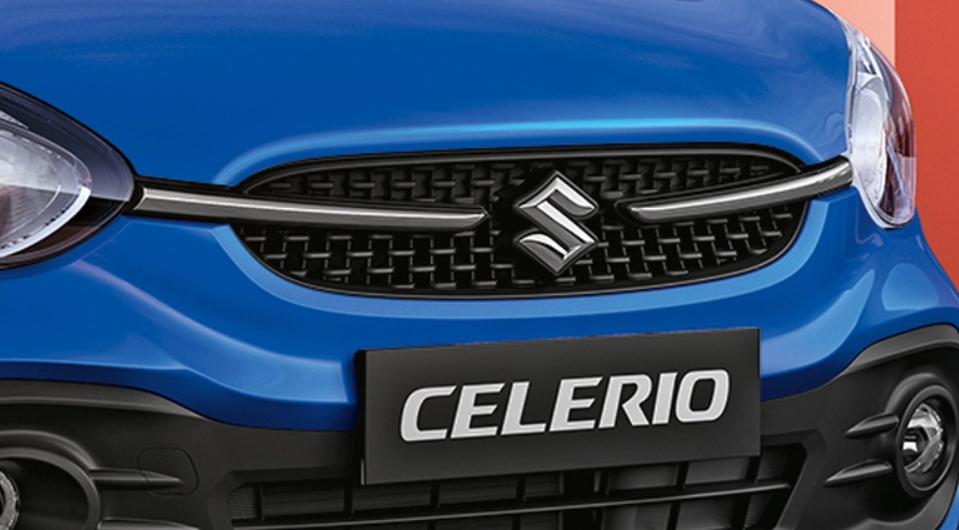
Pitted against its precursor, this new model definitely looks a lot more funky and energetic. The design language is what one would call modern, without being too over-the-top. The new iteration is also wider and boasts a longer wheelbase, whilst being a touch shorter in height and weighing a bit more as well. Needless to say, the new Celerio’s design will be more attractive to a lot more buyers.

The more organic-looking front end of the Celerio uses a taller facade with a heavily-sculpted bonnet and front bumper. The revised grille gets sleek chrome strips extending from the Suzuki logo and into the sweptback headlamps. Meanwhile, the sporty black inserts in the front bumper further add to the overall styling of the Celerio. Other stand-out visual features include the 15-inch black alloy wheels, ‘droplet-shaped’ tail lamps, and high-set ground clearance. The new Celerio is far better-looking than the model it replaces.
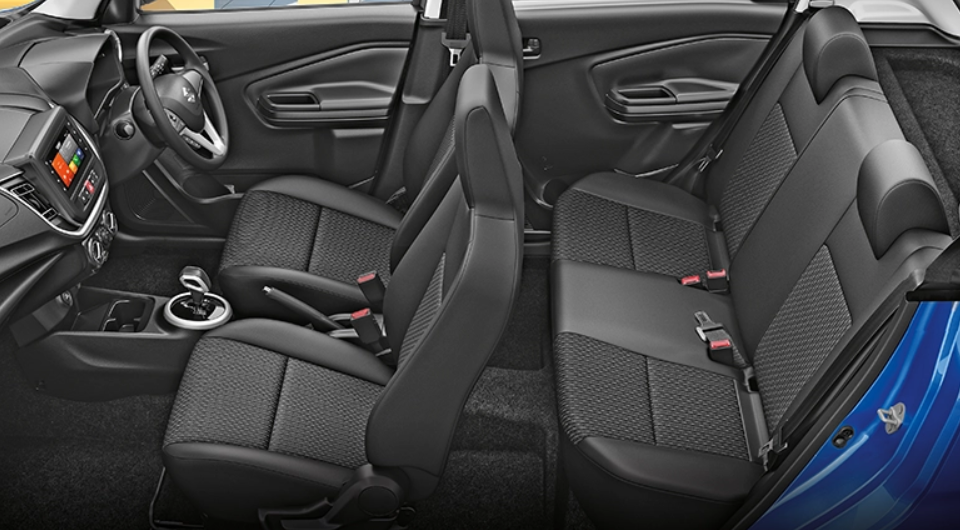
The new Celerio’s interior is mostly all black with hints of silver to break the pattern. While there isn’t much happening in terms of excitement on the visual front, the dashboard does get some complex contouring and creases. However, that doesn’t mean it looks great. The instrument binnacle is similar to what you will find in the Wagon R, which means that it can be a bit hard to decipher what’s happening in the small digital MID. Thankfully, the boot space is a respectable 313 liters.
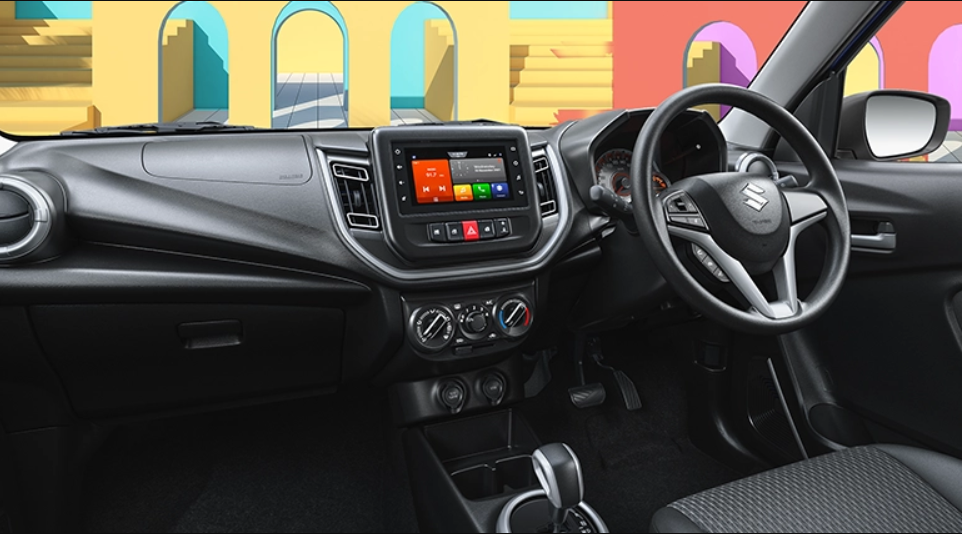
The Celerio’s cabin practicality is limited to a few cubbies in front of the gear lever and bottle holders in the door bins. However, there’s no storage in between the front seats. Maruti’s build quality has improved over some of its older cars, though the new Celerio’s interior is far from premium. The seats offer occupants a good amount of comfort even on longer journeys, whilst there’s no shortage of headroom. The greenhouse area is expansive enough which greatly betters the in-cabin experience and a rear bench that is a good place for two adults.

If you want to buy a new car, you will find the equipment list of the new Celerio to be decent but not fully satisfying.
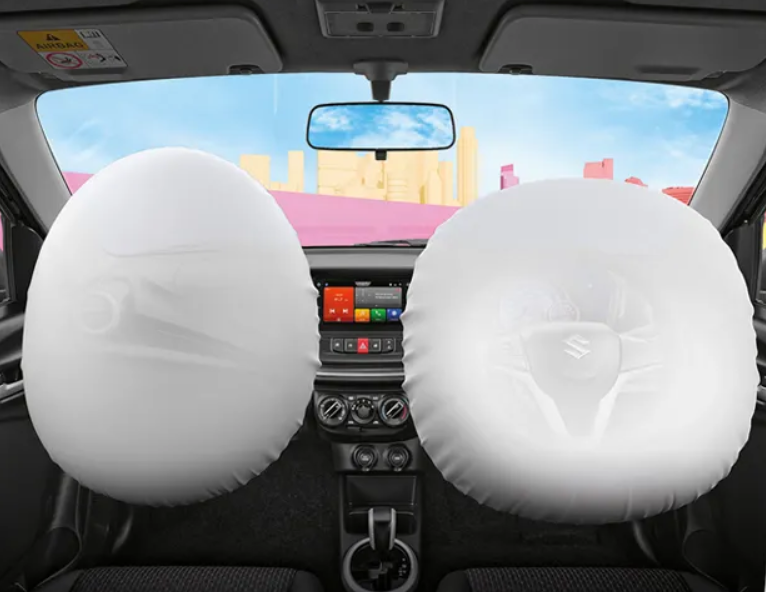
Like its newer siblings, this hatchback too gets all the basic safety gadgets right. It gets dual front airbags, ABS with EBD, and rear parking sensors. However, the Maruti Suzuki Celerio also comes with Hill Hold Assist, rear window wiper with washer & defogger, impact-sensing auto door unlock, seatbelt reminder, and Speed Alert System.
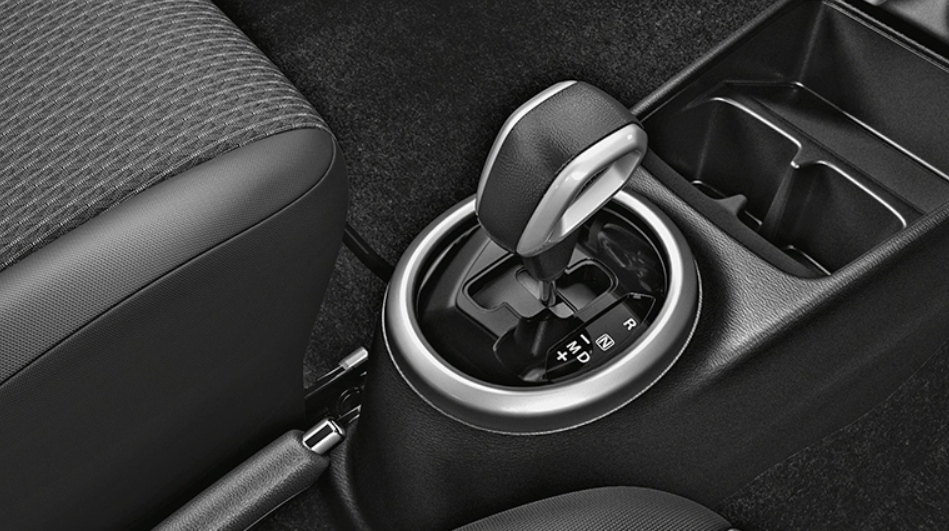
Powering the new Celerio is the automaker’s new K10C three-cylinder engine. The 1.0-liter all-aluminum mill produces about 66hp and 89Nm of peak torque when drinking petrol. When on a diet of CNG, the same powerplant comes up with 56hp and 82.1Nm of shove. While the CNG version is only offered with a 5-speed manual transmission, the petrol version is available with a 5-speed AMT as well.
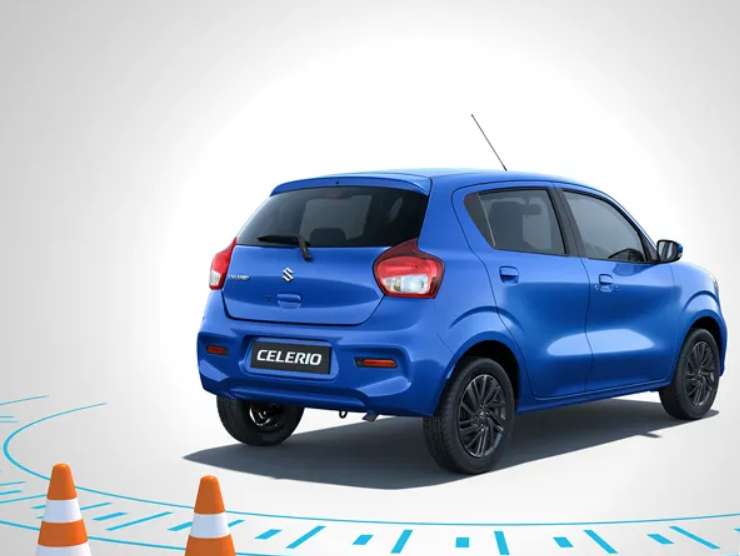
The new Celerio is an amazingly-efficient car. In petrol form, its mileage ranges from 24.97 kpl to 26.68 kpl, whilst the CNG model is rated at 35.60 km/kg. As for performance, this hatchback can touch a top speed of about 150 kph, with 100 kph from standstill coming up in 15.3 seconds.
As far as value is concerned, the ZXI variant makes the most sense. It gets all the items you will actually use, without any of the fluff that the ZXI+ comes with.
| Model | Maruti Suzuki Celerio | Maruti Suzuki Celerio CNG |
| Engine | 998cc Naturally-Aspirated Three-Cylinder Petrol | 998cc Naturally-Aspirated Three-Cylinder Petrol-CNG |
| Horsepower | 65.7hp | 56hp |
| Torque | 89Nm | 82.1Nm |
| Transmission | 5-speed Manual/5-Speed AMT | 5-speed Manual |
| Drive Configuration | FWD | FWD |
| 0-100 Km/H | 15.3 Seconds | 17.1 Seconds |
| Top Speed | 150 Km/H | ~ 135 Km/H |
| Mileage | 24.97-26.68 Km/L | 35.60 Km/Kg |
| Fuel Tank | 32 Liters | 60 Liters (equivalent) |
| Curb Weight | 800-825 Kg | 905 Kg |

The Tiago is one of the most famous and successful little hatchbacks in India. Since its launch back in 2016, the Tata Tiago has gained a reputation for affordable motoring without having to compromise on safety or styling. Even though it’s the cheapest Tata car on sale, the Tiago’s latest iteration has gained even more stuff to its equipment list than before. While the old car was good, this new one is even better.
| Tata Tiago Petrol Variants | Tata Tiago CNG Variants |
| XE Manual | XE Manual |
| XTO Manual | XM Manual |
| XT Manual | XT Manual |
| XT Rhythm Manual | XZ+ Manual |
| XZ+ Manual | XZ+ DT Manual |
| XZ+ DT Manual | |
| XTA AMT | |
| XZA+ AMT | |
| XZA+ DT AMT |
As you can see, there are many variants of the Tiago for customers to choose from. When it comes to its exterior colors, the Tata hatchback is available in Midnight Plum, Flame Red, Arizona Blue, Opal White, and Daytona Grey.
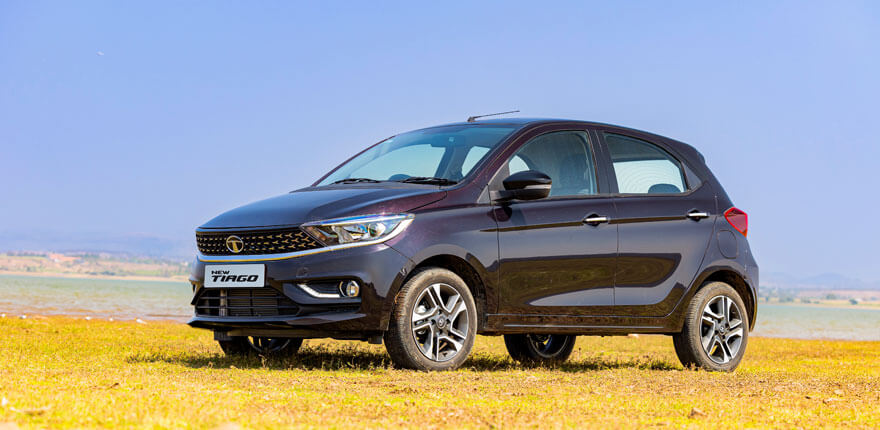
The Tiago remains a stylish little hatchback, irrespective of its asking price. Adding to its fun but mature image are elements like projector headlamps, a chic chrome grille with brand-specific chrome ‘Tri-Arrow’ embellishments, a revised bumper with a large air intake, and new LED DRLs next to the fog lamps.

Some of the other stylish bits on the outside include the arrow-shaped door handles, 15-inch alloy wheels, revamped tail lamps, a sporty roof spoiler, and a thin chrome bar on the tailgate. Overall, the Tata Tiago is a handsome-looking small car that plenty will like and appreciate for its modern but restrained design.
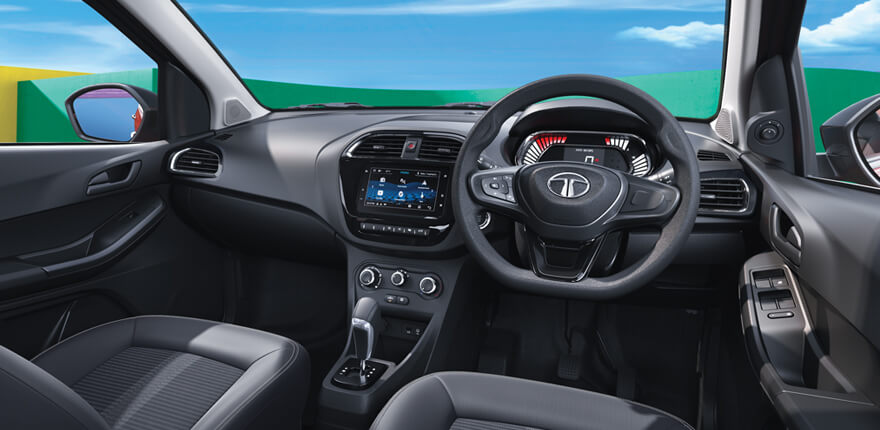
The Tiago sits much lower to the ground than either the Celerio or Wagon R. This means that you will have to stoop a little to get inside, and put just as much effort while stepping out. The seats are pretty nice and have the ‘Tri-Arrow’ design as seen elsewhere on the car. While the seat squab provides decent support and comfort, legroom & headroom for those in the back are far from class-leading.
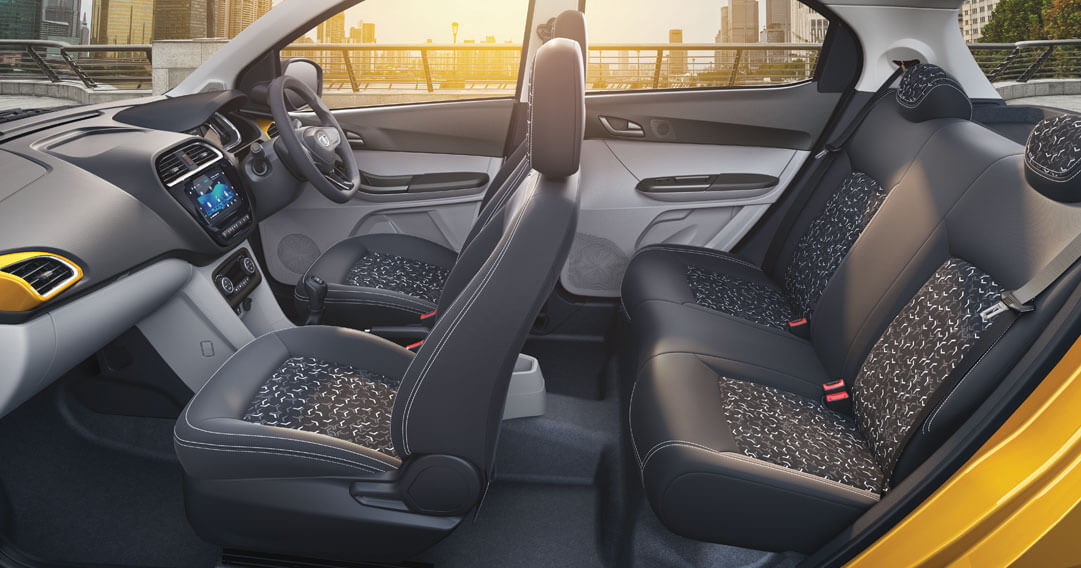
Also good is the design of the dashboard, with perceived quality being more than acceptable too. There is a good blend of gloss black and faux leather, while storage cubbies are dotted about the place. The Tiago’s cargo volume is 242 liters, which is enough for a hatchback this size.
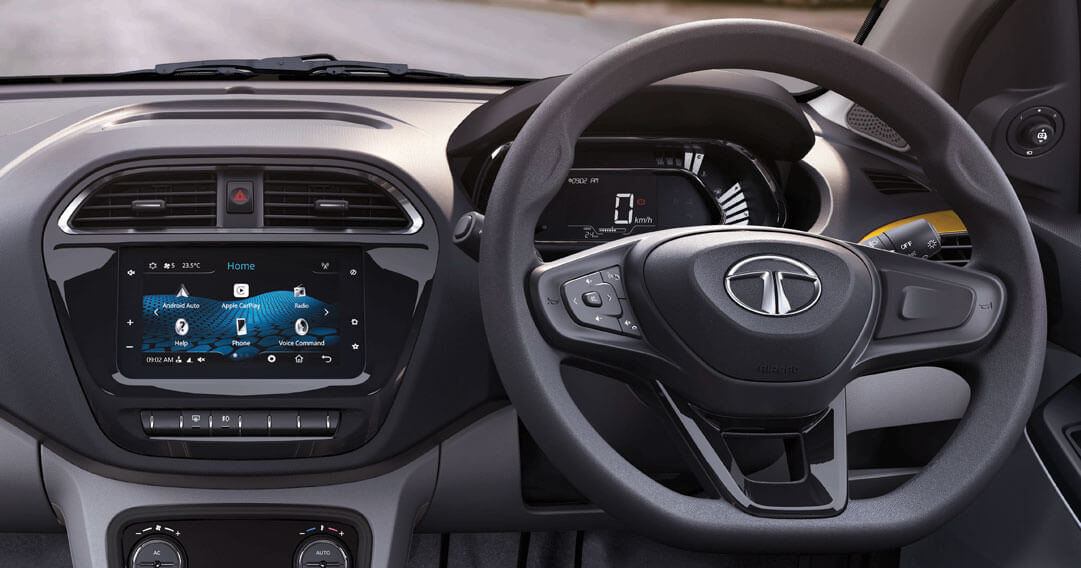
The Tiago gets quite a few modern features, though the higher variants that get many of them can get expensive.

Being one of the safest cars in the country, the Tata Tiago wears its GNCAP 4-star crash rating proudly. Earning it that merit is not only a strong bodyshell but also other features such as dual front airbags, ABS with EBD, Corner Stability Control, a reversing camera with active guidelines, speed-sensitive auto door lock, a day & night IRVM, and a rear defogger with a wiper.
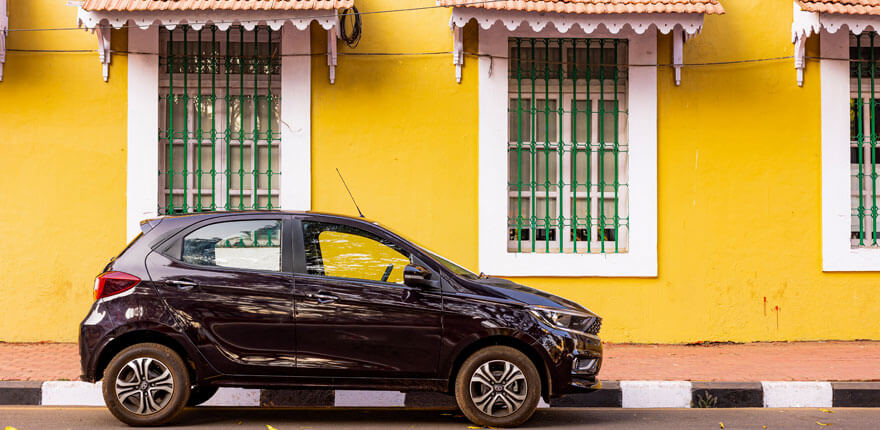
The 1.2-liter three-cylinder Revotron engine that powers the Tata Tiago develops about 85hp and 113Nm of maximum torque when fueled by petrol. However, when fueled by CNG, those same figures drop down to 72hp and 95Nm. Transmission choices in the Tiago come in the form of a 5-speed manual and a 5-speed AMT. The Tiago CNG is rated at 26.49 km/kg, whilst the petrol model can do about 19 kpl. When it comes to its top speed, the Tata Tiago maxes out at 165 kph.
According to us, the XZ+ variant of the Tiago makes a great case for itself. It gets all the features that you will use on a day-to-day basis while sporting a design that matches the car’s overall character as well.
| Model | Tata Tiago | Tata Tiago CNG |
| Engine | 1199cc Naturally-Aspirated Three-Cylinder Petrol | 1199cc Naturally-Aspirated Three-Cylinder Petrol-CNG |
| Horsepower | 84.8hp | 72hp |
| Torque | 113Nm | 95Nm |
| Transmission | 5-Speed Manual/5-Speed AMT | 5-Speed Manual |
| Drive Configuration | FWD | FWD |
| 0-100 Km/H | 14.1 Seconds (MT) / 16.2 Seconds (AMT) | ~ 17 Seconds |
| Top Speed | ~ 165 Km/H | ~ 150 Km/H |
| Mileage | 19 Km/L (MT) / 19.01 Km/L (AMT) | 26.49 Km/Kg |
| Fuel Tank | 35 Liters | 60 Liters (equivalent) |
| Curb Weight | 935-991 Kg | 1,040-1,087 Kg |
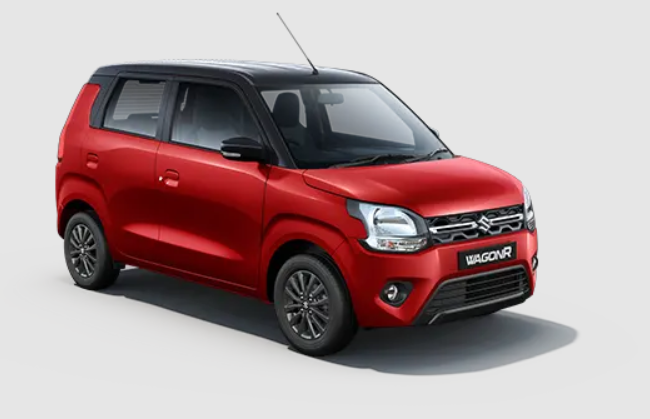
The Maruti Suzuki Wagon R has been chugging along well for a long time. It has pretty much set the standard for a reasonably priced, spacious, and frugal hatchback in the country. Aside from the Santro, the Wagon R made the ‘tall boy’ body design quite a statement when it wasn’t even that popular. Sticking to its guns, the new Wagon R is here to ensure the succession of its lineage, so to speak.
| Maruti Suzuki Wagon R Petrol Variants | Maruti Suzuki Wagon R CNG Variants |
| Tour H3 Manual | Tour H3 Manual |
| LXI 1.0L Manual | LXI CNG 1.0L |
| VXI 1.0L Manual | VXI CNG 1.0L |
| ZXI 1.2L Manual | |
| VXI 1.0L AGS | |
| ZXI+ 1.2L Manual |
Like its other hatchback siblings in the Maruti stable, the new Wagon R offers buyers multiple variants depending on their requirements and budget. As for its color choices, the new Wagon R is offered in shades like Solid White, Prime Gallant Red, Poolside Blue, Magma Grey, Silky Silver, Nutmeg Brown, Metallic Magma Grey Plus Black, and Prime Gallant Red Plus Black.
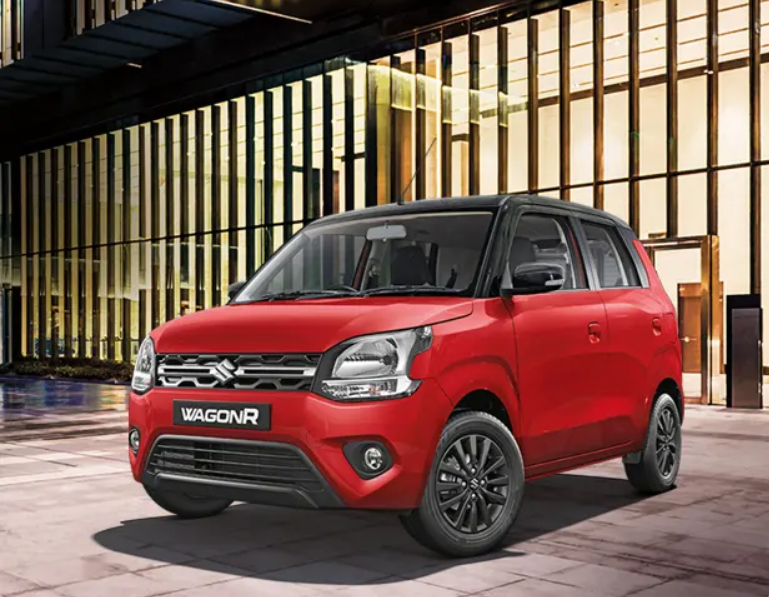
The front end is where the new Wagon R really makes a lasting impression. The styling is flashy and bold enough to grab eyeballs – something the old car could never boast about. Some of the real highlights here include the large headlights, striking main grille, and a flush front bumper. There are also Volvo-like rear tail lamps, optional dual-tone exterior paint schemes, a ‘floating’ roof effect, new 14-inch alloy rims, and redesigned wing mirrors.
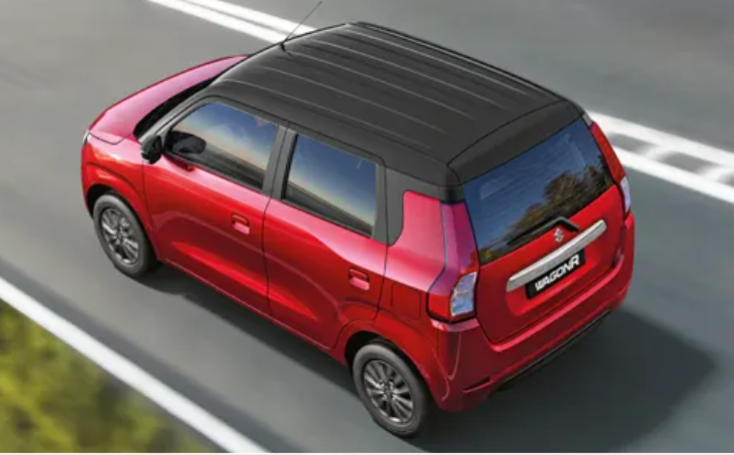
There’s no doubting the Wagon R’s boxy silhouette for any other car. The changes that Maruti Suzuki has made to the styling of the hatchback has made it that much more likable for folks that it is aimed at. That said, not everyone will take too kindly to the rather basic styling of the Wagon R.
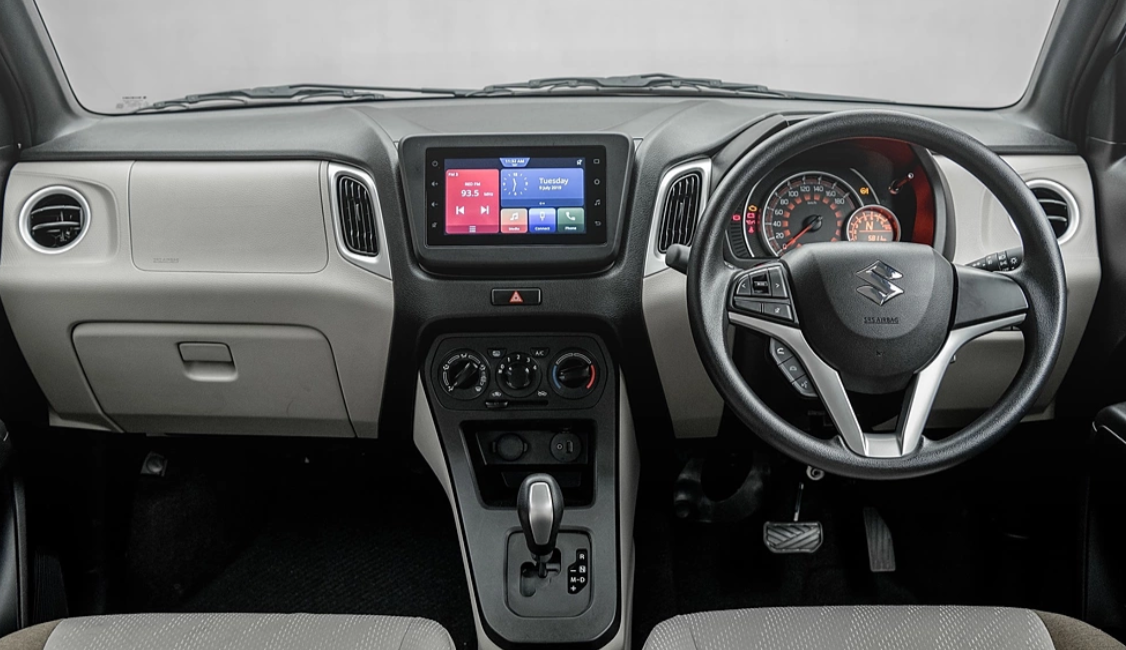
Owing to its tall body, the Wagon R has a cabin that can accommodate the tallest of folks with room to spare. Then there’s the fact that Maruti has stretched the wheelbase of the car by a bit, hence opening up some more legroom for the rear passengers. You will also not have any trouble locating storage cubbies, with multiple spots within easy reach. Even the glovebox has upper and lower segments.

The seats, in the meantime, afford their occupants good comfort and support. The two-tone interior layout helps with freeing up visual space, whilst the massive windows are a boon for those that otherwise might feel claustrophobic. Build quality is better than before, but do not expect any premium-feeling materials here.
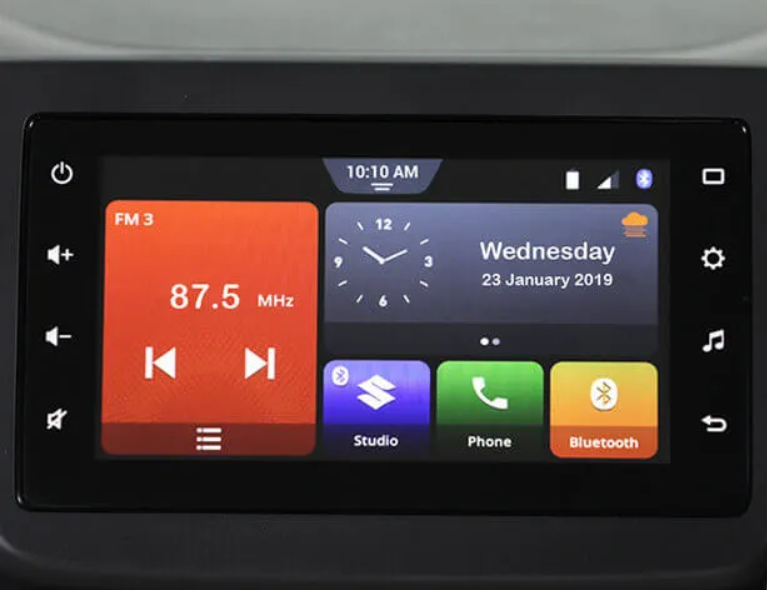
Compared to its predecessor, the latest Wagon R has more modern features. However, some like the digital MID/tachometer are a hit & miss. It’s too dingy and confusing when you are driving, and the information provided may not be useful all of the time.
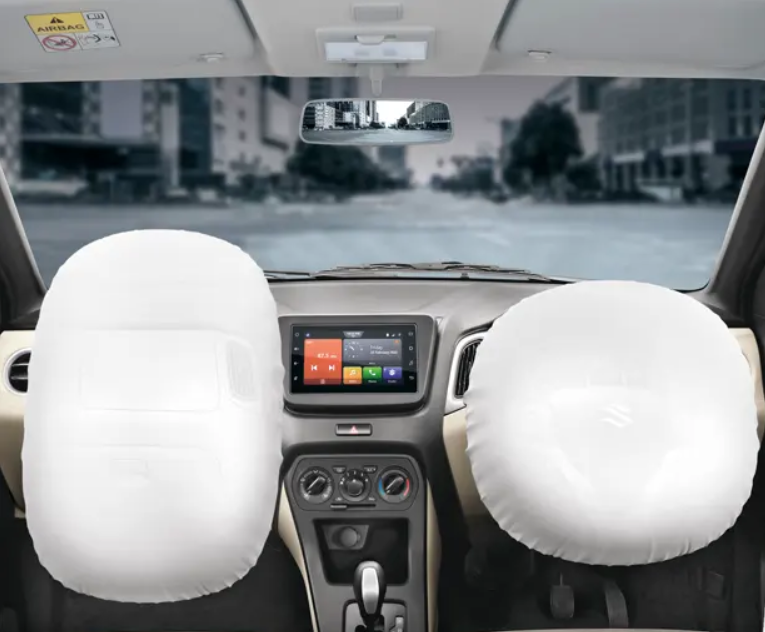
The Wagon R is no longer lacking some of the most important safety features anymore. Its kit includes the likes of speed-alert system along with speed-sensitive door lock, central locking, front seatbelts with pre-tensioners, and a rear wiper & washer. Moreover, you will also find tech such as ABS with EBD, Hill Hold Assist, rear parking sensors, and dual front airbags.
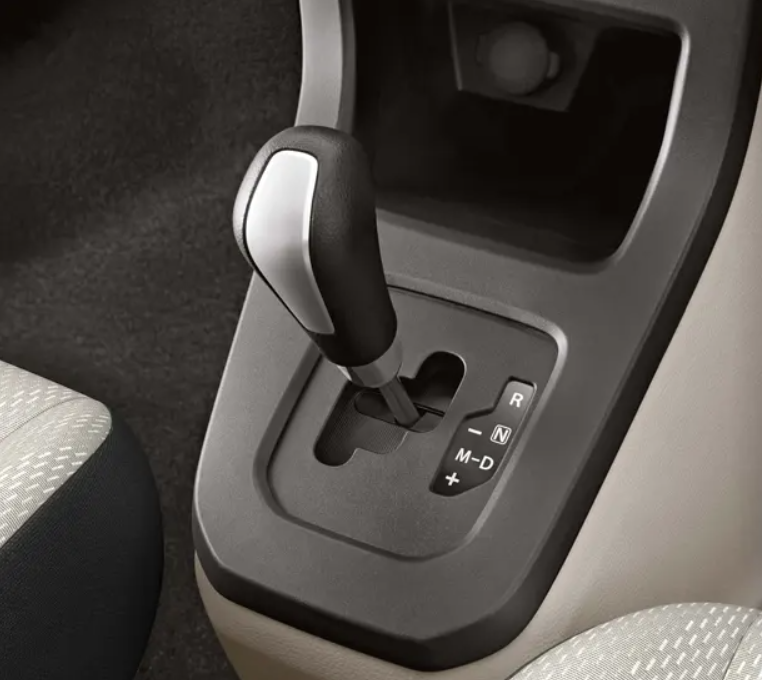
Maruti Suzuki’s K10C three-cylinder and K12N four-cylinder engines power the Wagon R. These are 1.0-liter and 1.2-liter units, respectively. The latter pushes out nearly 88hp and 113Nm of torque, while the former produces 66hp and 89Nm of torque. Of course, the Wagon R CNG makes less oomph than its petrol counterparts – 56hp and 82.1Nm of torque.

The Wagon R gets either a 5-speed manual or a 5-speed AMT. In terms of fuel economy, the Wagon R 1.2L returns between 23.56 kpl and 24.43 kpl in manual and AMT versions, respectively. As for the 1.0L model, you can expect a mileage of between 24.35 kpl and 25.19 kpl.
Budget permitting, we recommend you go for the VXI variant of the Wagon R with the 1.2-liter engine.
| Model | Maruti Suzuki Wagon R 1.0L | Maruti Suzuki Wagon R 1.0L CNG | Maruti Suzuki Wagon R 1.2L |
| Engine | 998cc Naturally-Aspirated Three-Cylinder Petrol | 998cc Naturally-Aspirated Three-Cylinder Petrol-CNG | 1197cc Naturally-Aspirated Four-Cylinder Petrol |
| Horsepower | 66hp | 56hp | 88hp |
| Torque | 89Nm | 82.1Nm | 113Nm |
| Transmission | 5-Speed Manual/5-Speed AMT | 5-Speed Manual | 5-Speed Manual/5-Speed AMT |
| Drive Configuration | FWD | FWD | FWD |
| 0-100 Km/H | 13.4 Seconds (AMT) | N/A | 12.1 Seconds (MT) |
| Top Speed | ~ 150 Km/H | ~ 120 Km/H | ~ 160 Km/H |
| Mileage | 24.35 Km/L (MT) / 25.19 Km/L (AGS) | 34.05 Km/Kg | 23.56 Km/L (MT) / 24.43 Km/L (AGS) |
| Fuel Tank | 32 Liters | 60 Liters (equivalent) | 32 Liters |
| Curb Weight | 810-835 Kg | 910-920 Kg | 835-850 Kg |
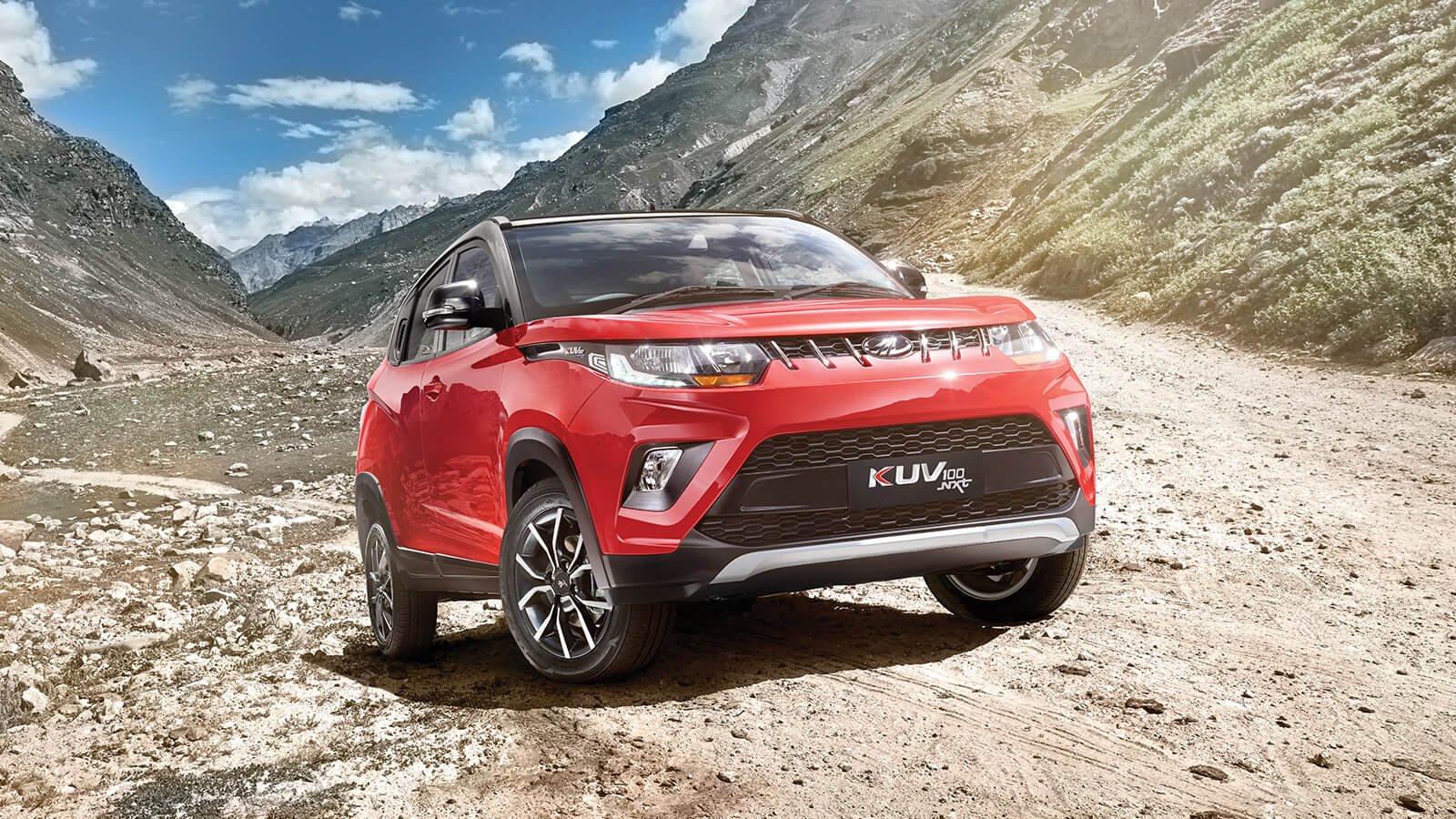
The KUV100 NXT is the smallest and cheapest car that the Indian automaker sells right now. Being a company that is known only for its SUVs, it becomes pretty obvious that the KUV100 NXT is also an SUV – at least it aspires to be one. While it’s not the most popular new Mahindra car, it still exists as the entry point into the brand’s world of SUVs. Despite that, in a market that dotes any car that even remotely resembles a 4×4, this one continues to hang onto its nameplate.
| Mahindra KUV100 NXT Petrol Variants |
| K2+ Manual |
| K4+ Manual |
| K6+ Manual |
| K8 Manual |
Keeping it nice and simple, the KUV100 NXT doesn’t try to dazzle buyers with a million different options. However, it does come in 8 exterior colors – Pearl White, Dazzling Silver, Flamboyant Red, Fiery Orange, Designer Grey, Midnight Black, Silver & Black, and Red & Black.

Let’s get something absolutely straight here. The exterior styling of the KUV100 NXT will divide opinions among many. It’s one of the furthest things from a conventional design, with aesthetic touches that are questionable at best. Having said that, the front fascia of the KUV100 NXT looks decent. It comes with a sleek yet aggressive front grille that’s flanked by equally-sleek dual-chamber headlamps with integrated LED DRLs.
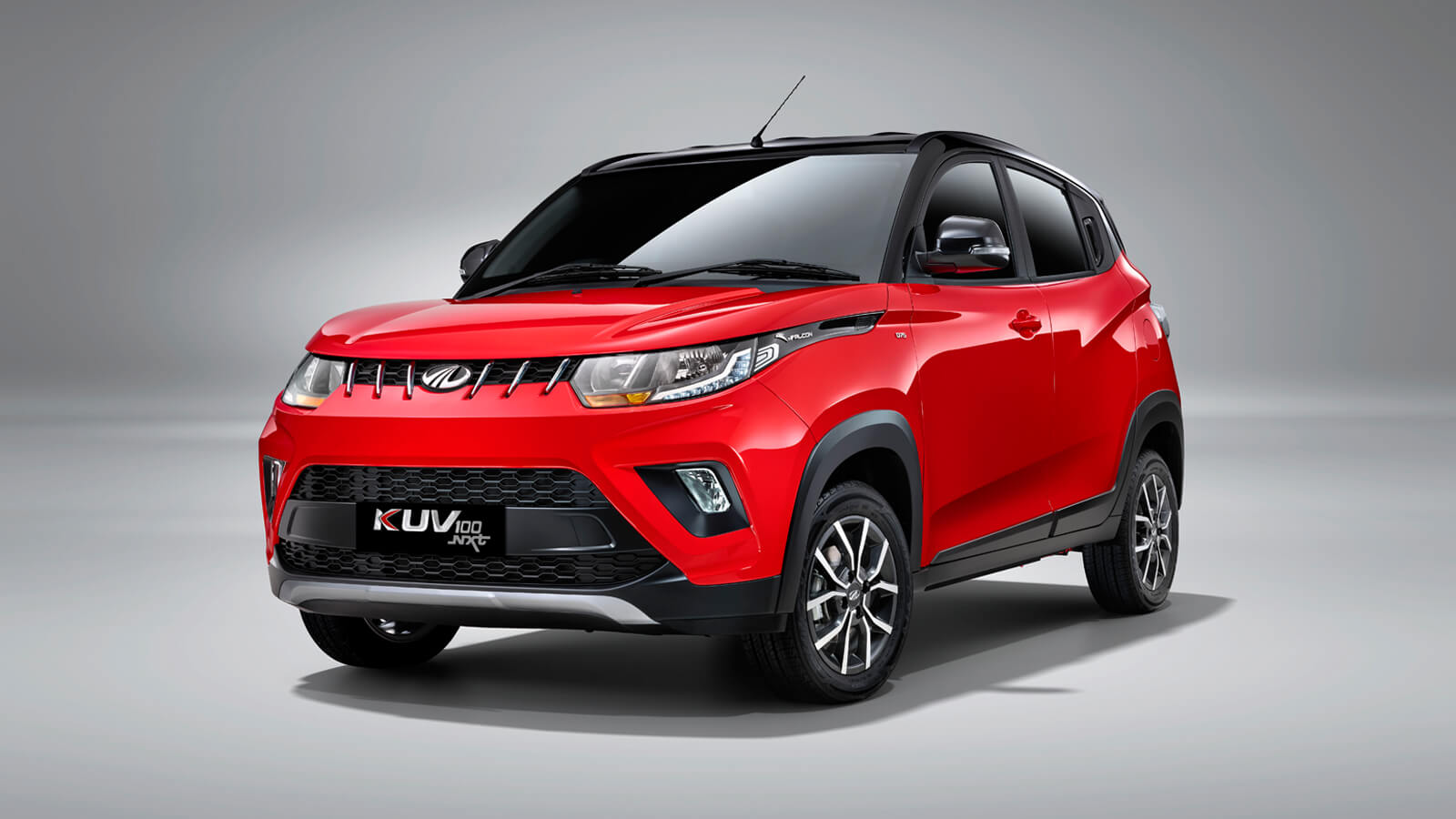
Mahindra has made the front bumper really muscular by giving it a deep center air dam with a thick black bar in the middle, recessed fog lamps, and a faux silver skid plate. The clamshell bonnet looks quite cool and muscular, too. However, as move away from the front of the KUV100 NXT, things quickly start to look more and more awkward. Despite the dual-tone paint scheme and black cladding all around, one simply cannot ignore the tiny wheels that look lost in those big wheel arches.

Since its length is really restricted, the short overhang at the back coupled with the overly-styled rear half makes for a stance that can be best described as disproportionate. Still, you do get rear door handles that are integrated into the C-pillar, a gently-sloping roofline, and a prominent roof spoiler. Finally, the rear encompasses dual-barrel clear lens taillights and a sporty-looking rear bumper that also scores a faux skid plate.
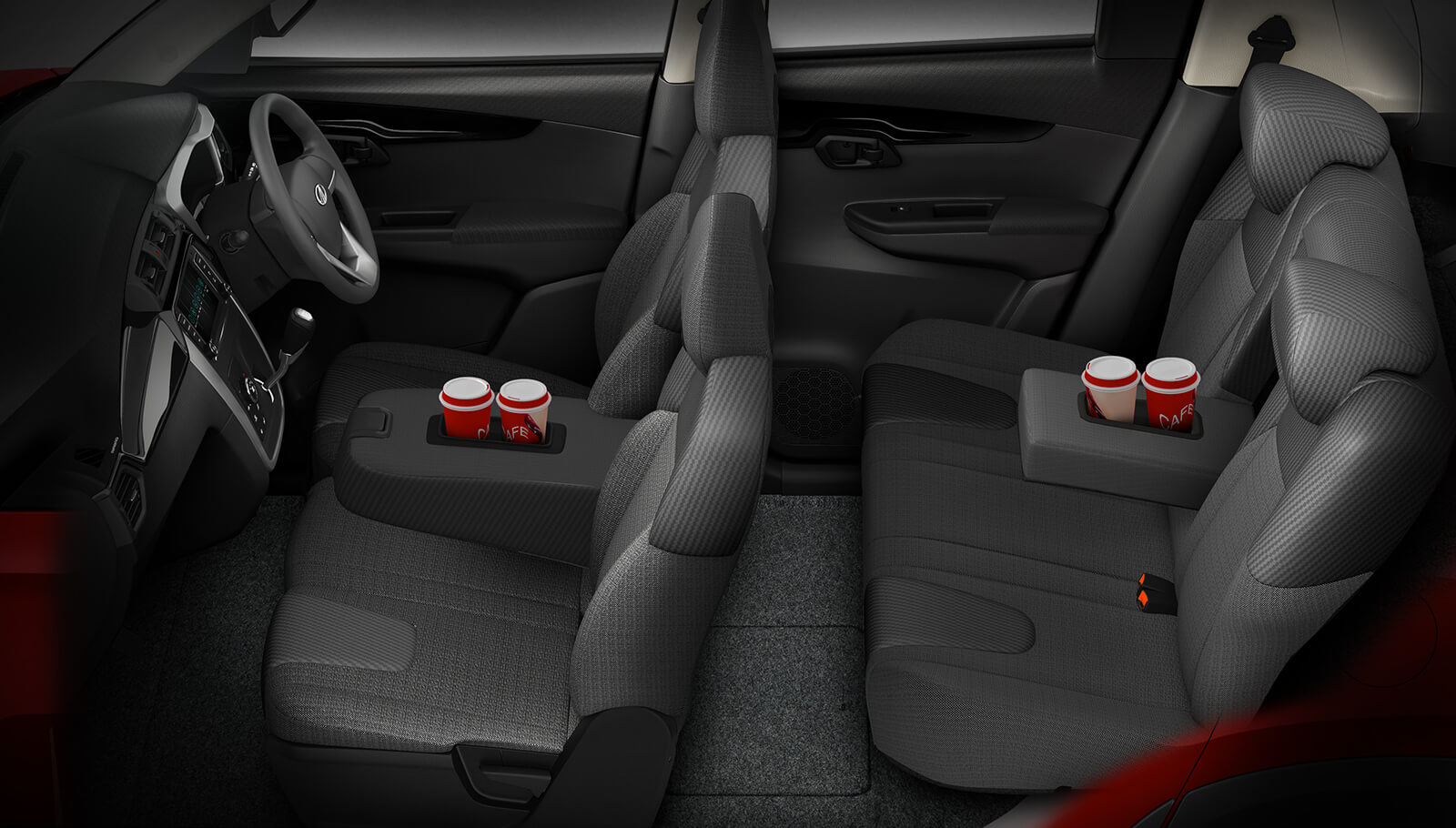
However, it’s on the inside that the KUV100 NXT really starts to show its age. The entire dashboard and console design look dated and pretty utilitarian – almost feeling like a van in its appearance. On a side note, the positioning of the gear lever and its functioning is well-judged and looks cool too. What doesn’t look that cool is the fake carbon fiber finish that covers the top portion of the dashboard and doors.
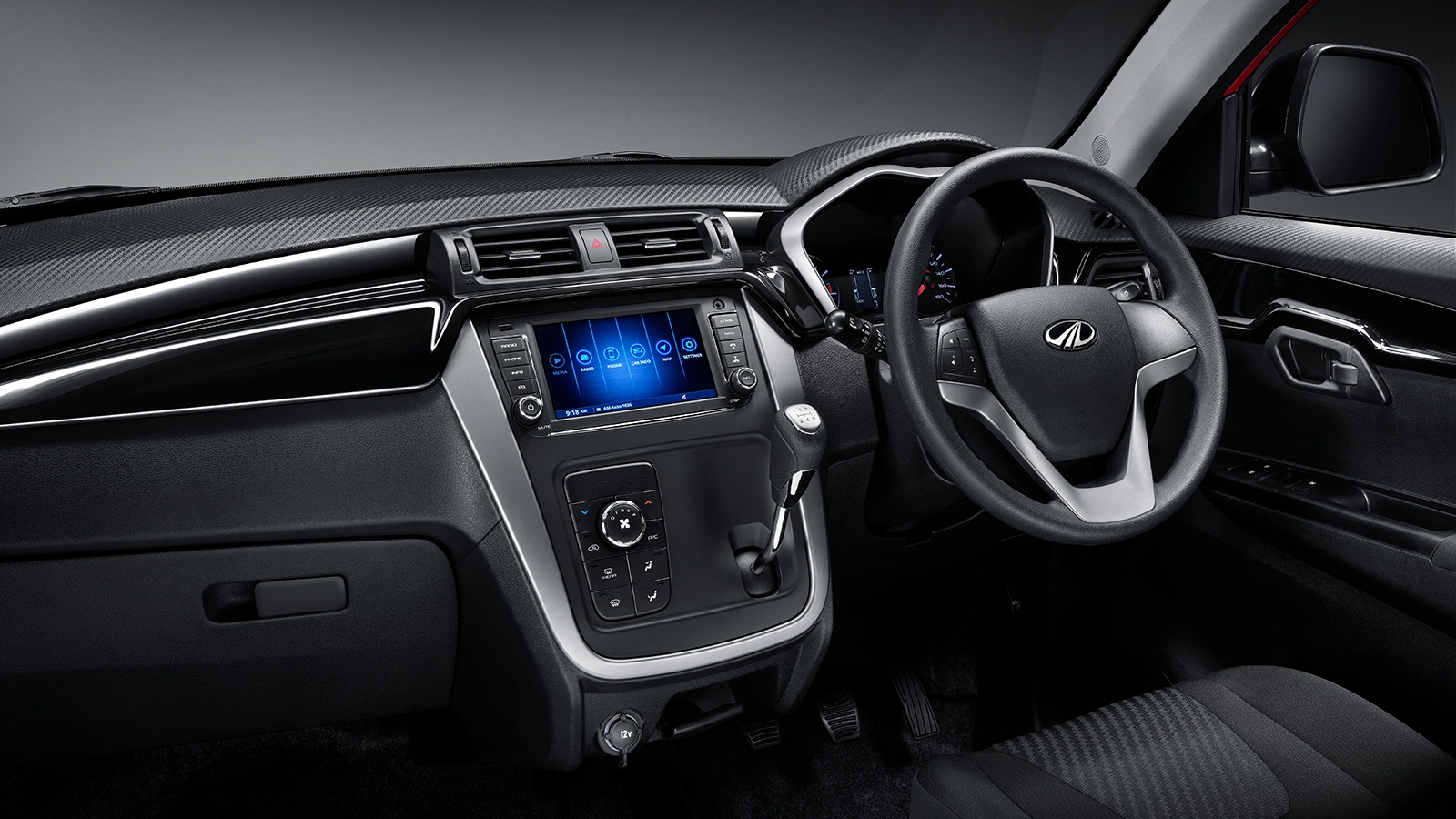
The instrument console and touchscreen are similar to what you will find in the Scorpio Classic. There are also several blind spots, with the most glaring one being due to the extraordinarily thick C-pillars. The seats are just about decent, but the rear ones are not the best in the business. The cabin is quite practical, with front & rear armrests with built-in cupholders, deep-enough front door pockets & glovebox. That’s pretty much about it when it comes to storage cubbies. In terms of cargo space, the KUV100 gets a 243-liter boot.
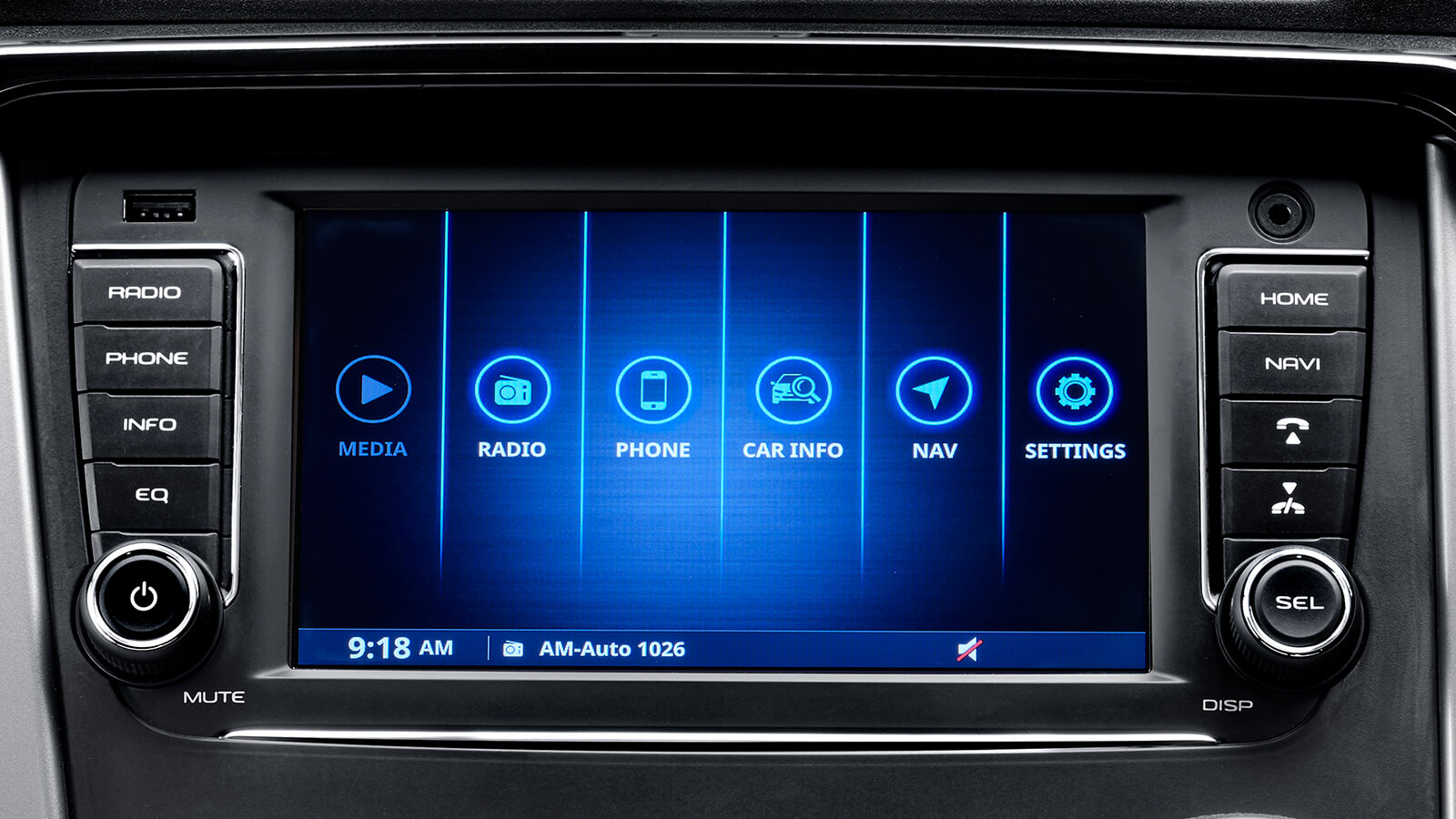
While it’s quite old, the KUV100 NXT does get a few features that some might call modern. Given the low asking price, some of its shortcomings can be ignored, but not all.
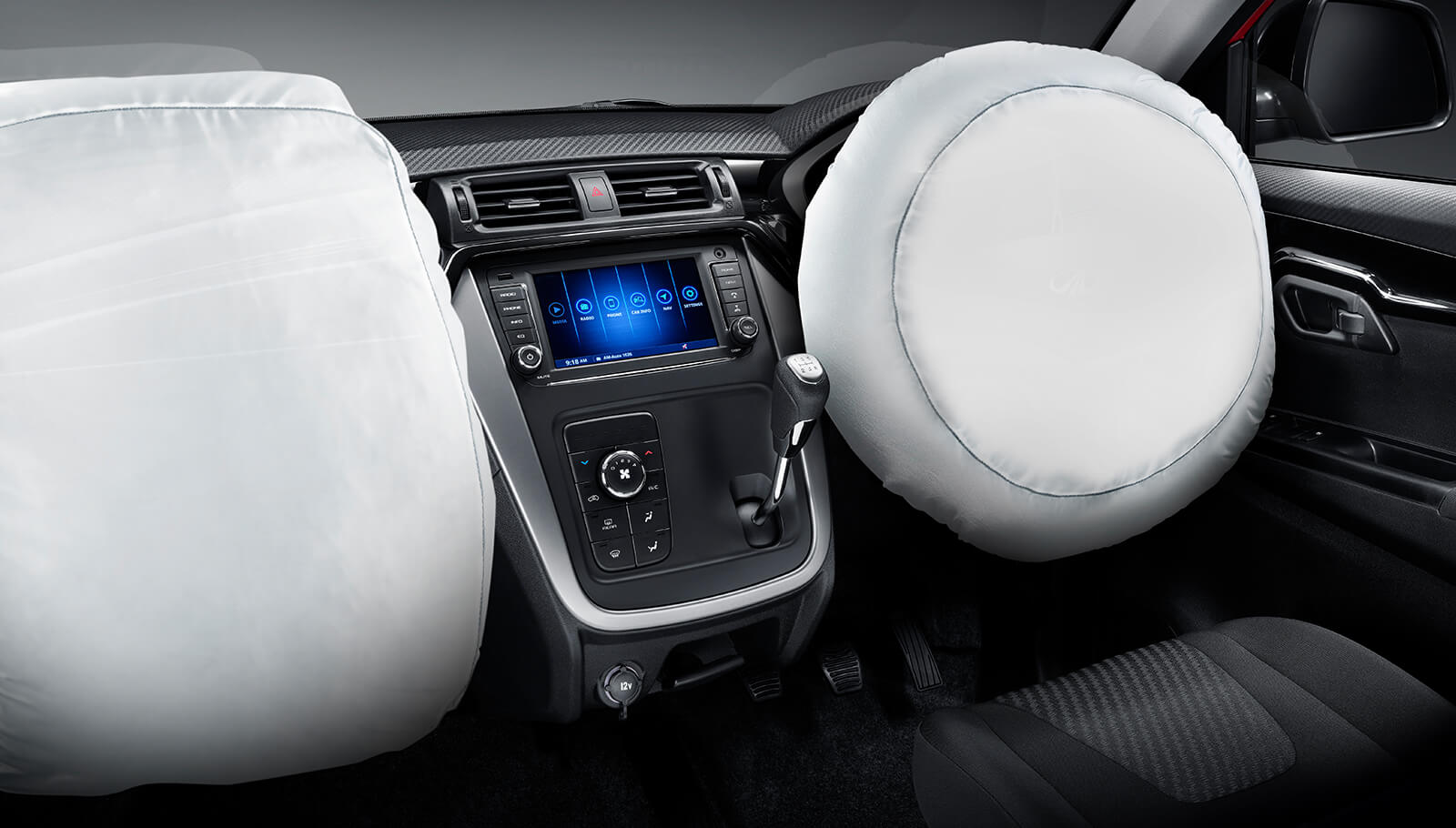
The KUV100 NXT’s safety nannies include ABS with EBD, ISOFIX child-seat anchor points, dual airbags, rear parking sensors with reversing camera, child safety rear door locks, rear defogger with wiper, central locking, and a collapsible steering column.
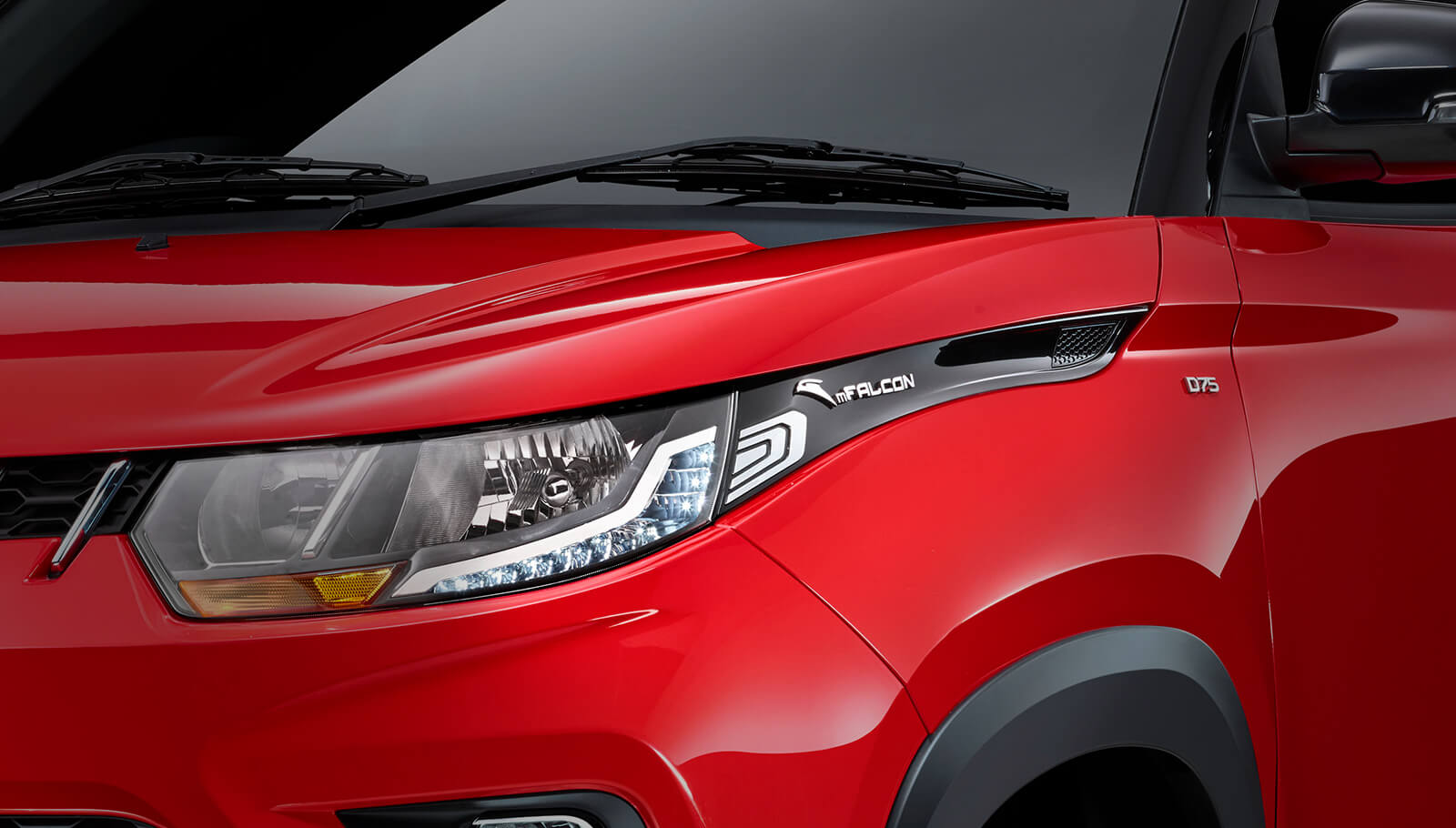
Under the bonnet of the KUV100 NXT sits the mFalcon G80 petrol engine. This 1.2-liter mill uses dual variable valve timing and multi-point fuel injection. The end result of all this tech is 82hp and 115Nm of maximum torque going to the front wheels via a 5-speed manual transmission. When push comes to shove, this small ‘SUV’ can attain a top speed of 160 kph and hit 100 kph in 14.6 seconds. As for its mileage, ARAI has rated that at 18.2 kpl.
If you really must, then the K6+ should be the go-to variant of the KUV100 NXT.
| Model | Mahindra KUV100 NXT |
| Engine | 1198cc Naturally-Aspirated Three-Cylinder Petrol |
| Horsepower | 82hp |
| Torque | 115Nm |
| Transmission | 5-Speed Manual |
| Drive Configuration | FWD |
| 0-100 Km/H | 14.6 Seconds |
| Top Speed | 160 Km/H |
| Mileage | 18.20 Km/L |
| Fuel Tank | 35 Liters |
| Curb Weight | ~ 1,085 Kg |
All the cars mentioned in this article cost much less than 10 lakhs (ex-showroom), and represent the cheapest offerings in India. However, just because you are not paying all that much money, doesn’t mean that you are left with just the bottom-of-the-barrel stuff. In fact, the options that are currently available in the market are valid enough and suit almost everyone’s needs. If you are on a really tight budget, then cars like the Alto 800, Alto K10, redi-Go, and S-Presso are a worthy bunch.
If you want an entry-level 7-seater, then your sole option is the Datsun Go+. On the other hand, cars like the Maruti Suzuki Celerio and the Maruti Suzuki Wagon R are for those who want a practical yet spacious hatchback on a reasonable budget. As for the Tata Tiago, it’s one of the best value-for-money cars in its segment. If you want something that’s quirkier but still offers enough features, then the Renault Kwid should be on your shortlist. As for the Mahindra KUV100 NXT, well…
Check out the latest Car Schemes available across all car brands only at AutoBreeds.
A: The best entry-level hatchbacks in India are the Maruti Suzuki Alto 800, Datsun redi-Go, and Tata Tiago.
A: The best low budget cars in India are the Maruti Suzuki Alto 800, Renault Kwid, and Tata Tiago.
A: Maruti Suzuki is often ranked as the best car company in India.
A: Ideally, you should be able to put down 20 percent of a new car's total price as a downpayment in India.
A: The best car for a middle-class family in India is the Maruti Suzuki Swift.
A: The cheapest diesel car in India is the Tata Altroz.A: The cheapest petrol car in India is the Maruti Suzuki Alto 800.
A: The cheapest petrol car in India is the Maruti Suzuki Alto 800.
A: The cheapest CNG car in India is the Maruti Suzuki Alto 800.
A: The cheapest electric car in India is the Tata Tigor EV.